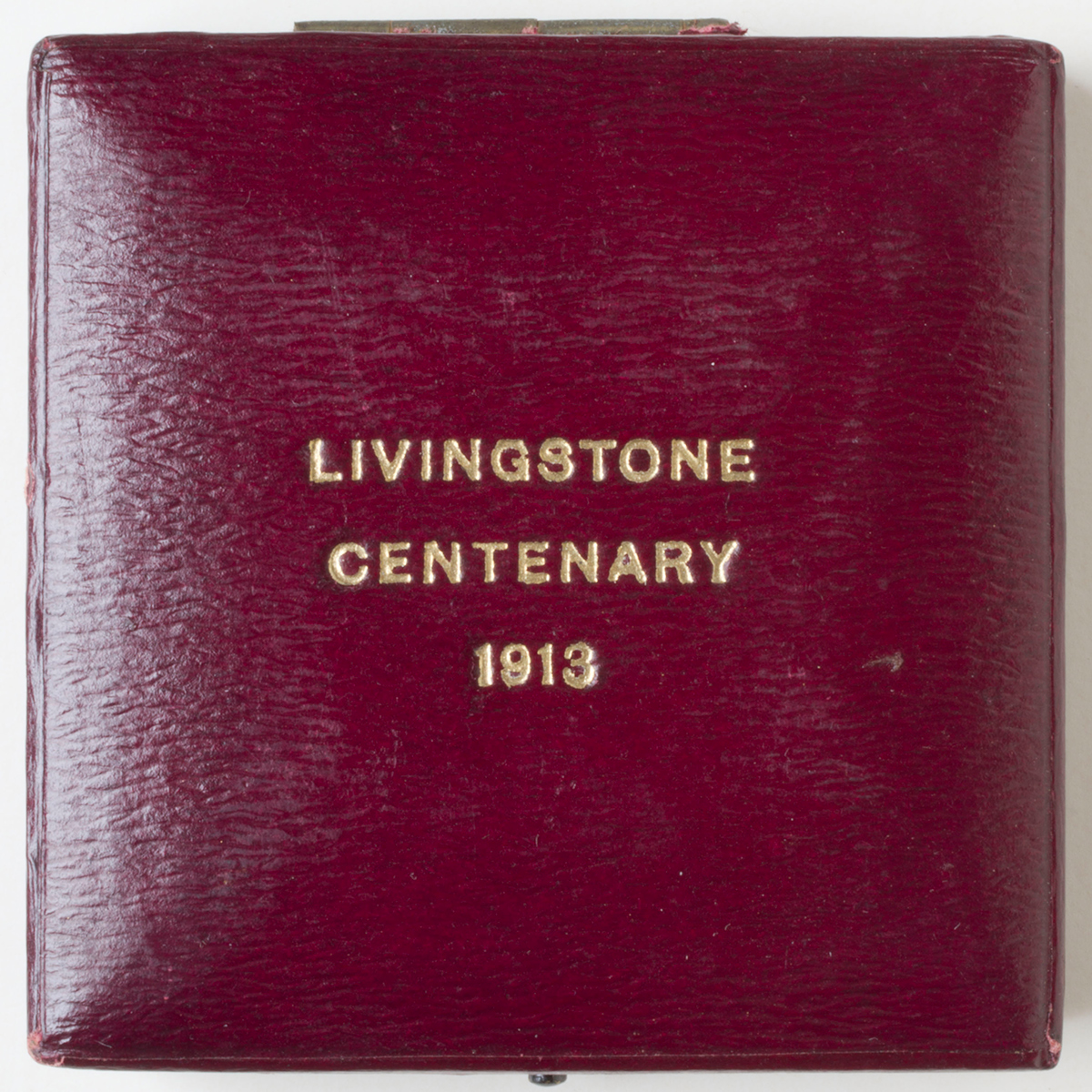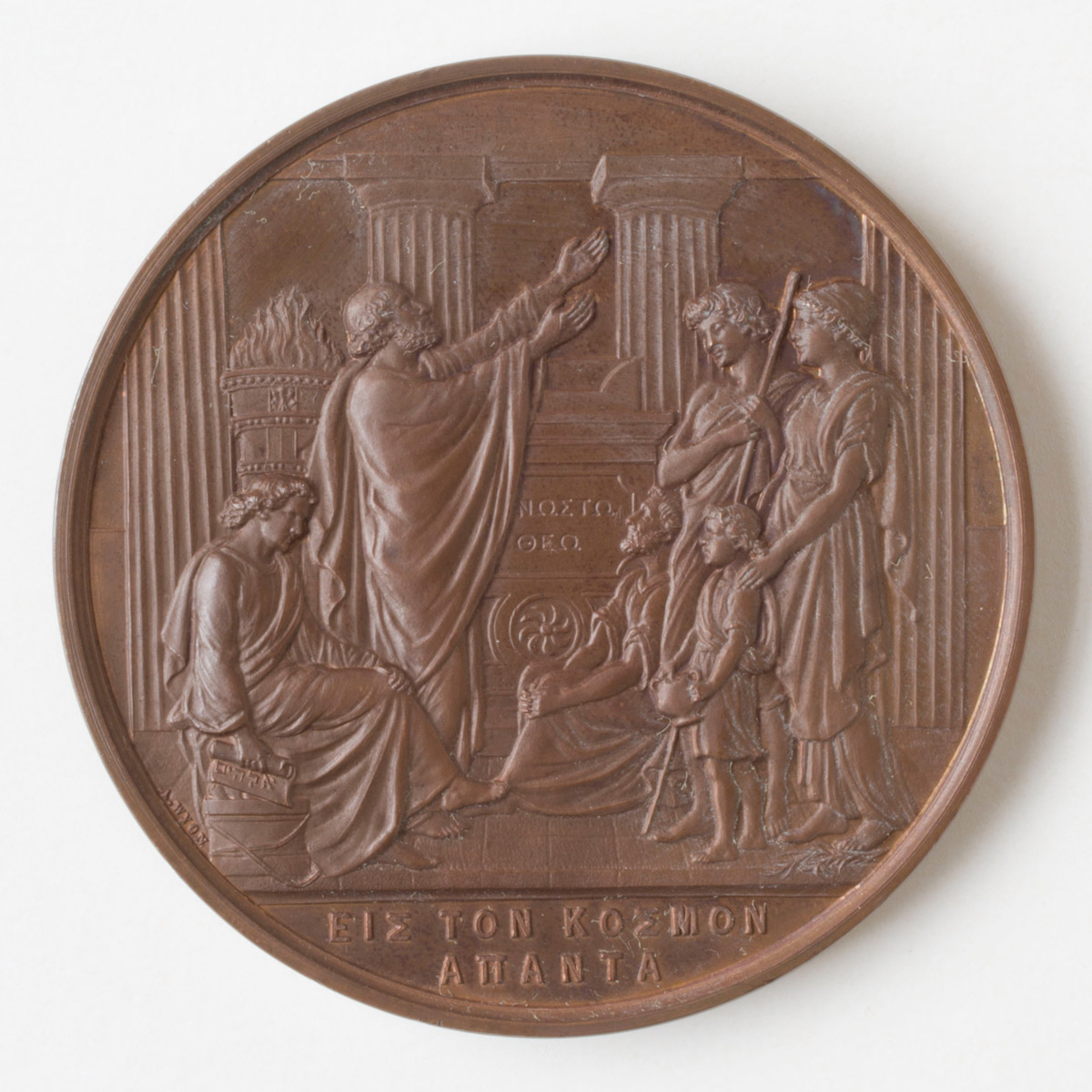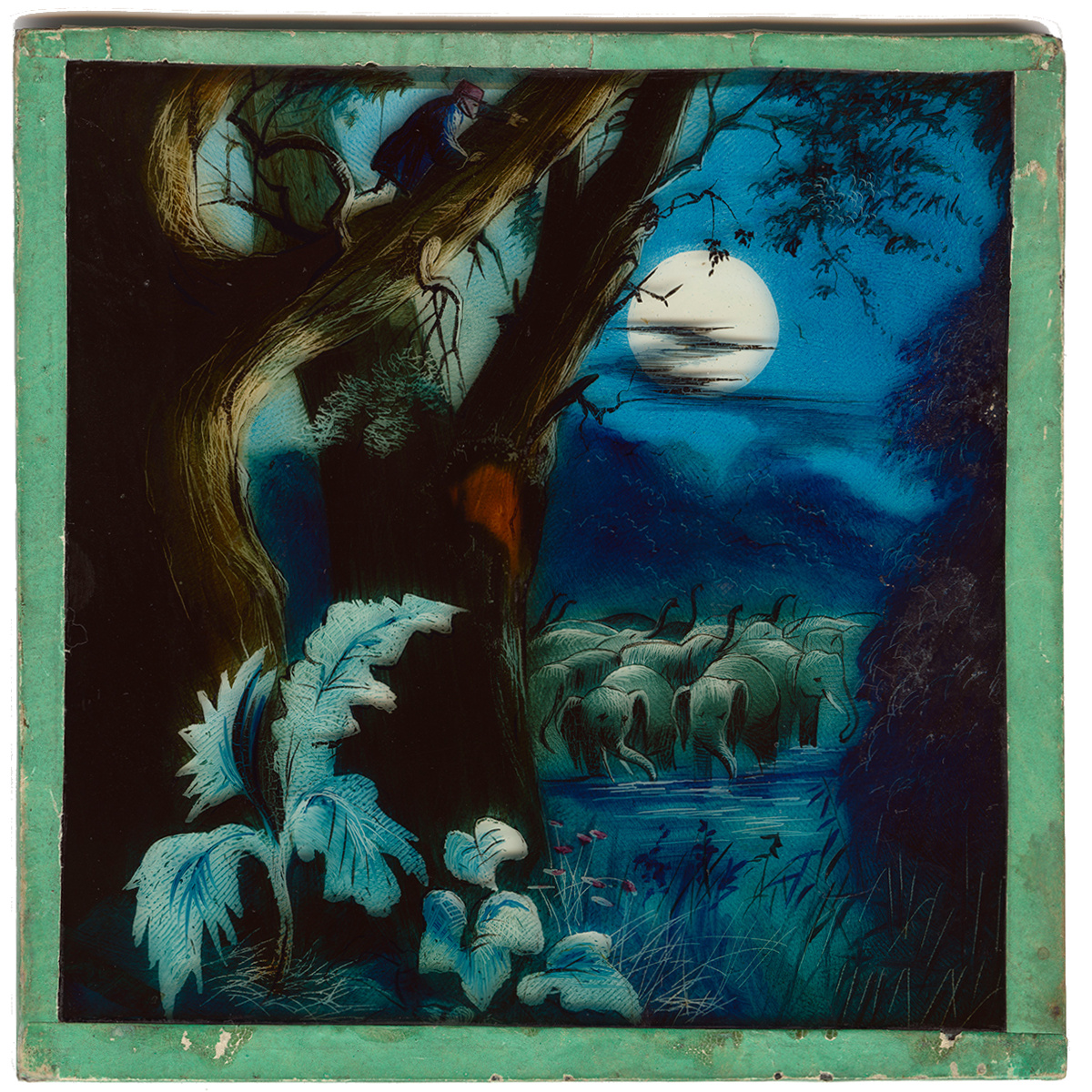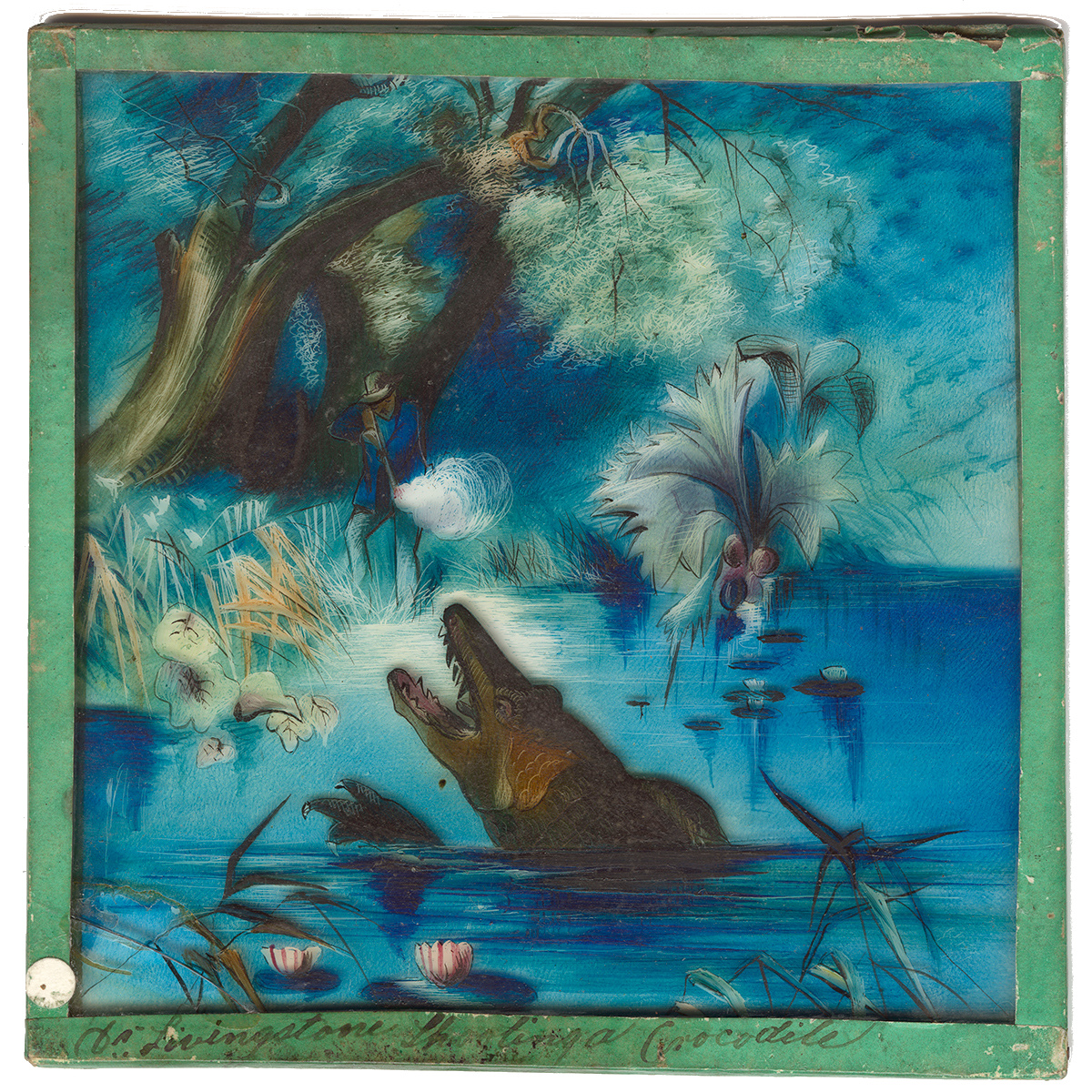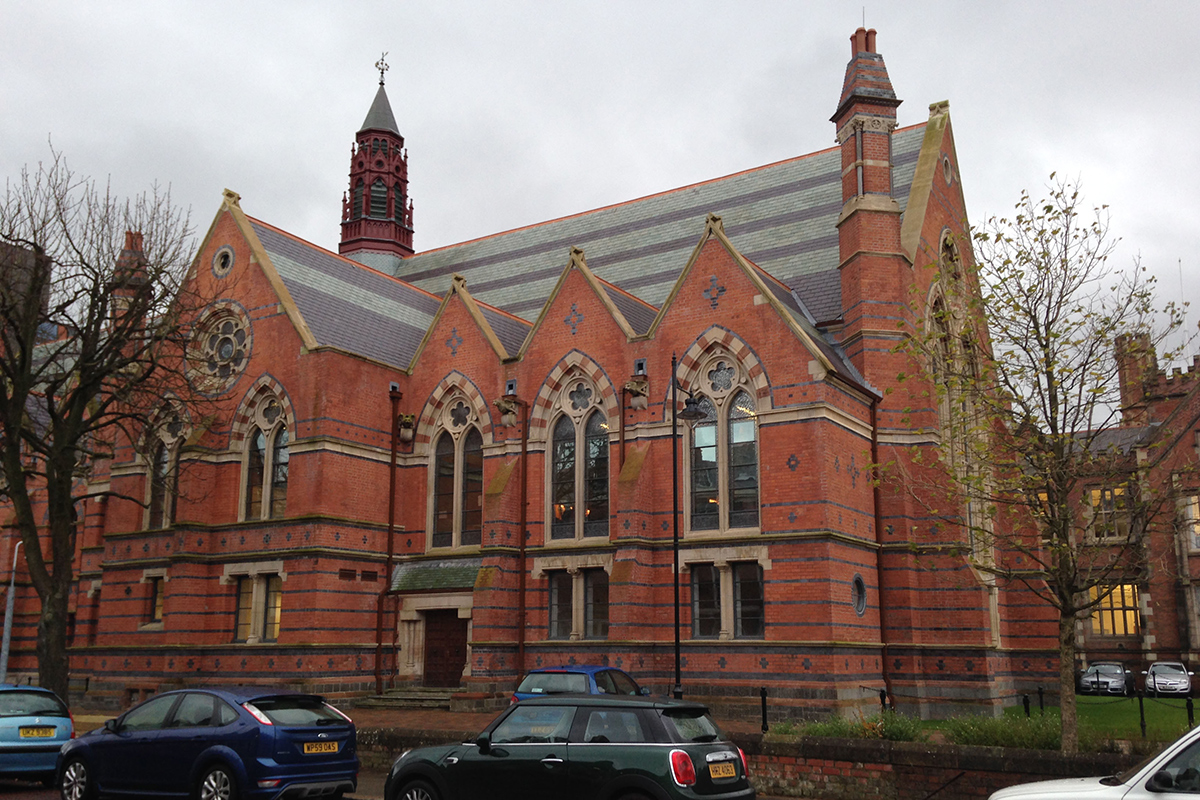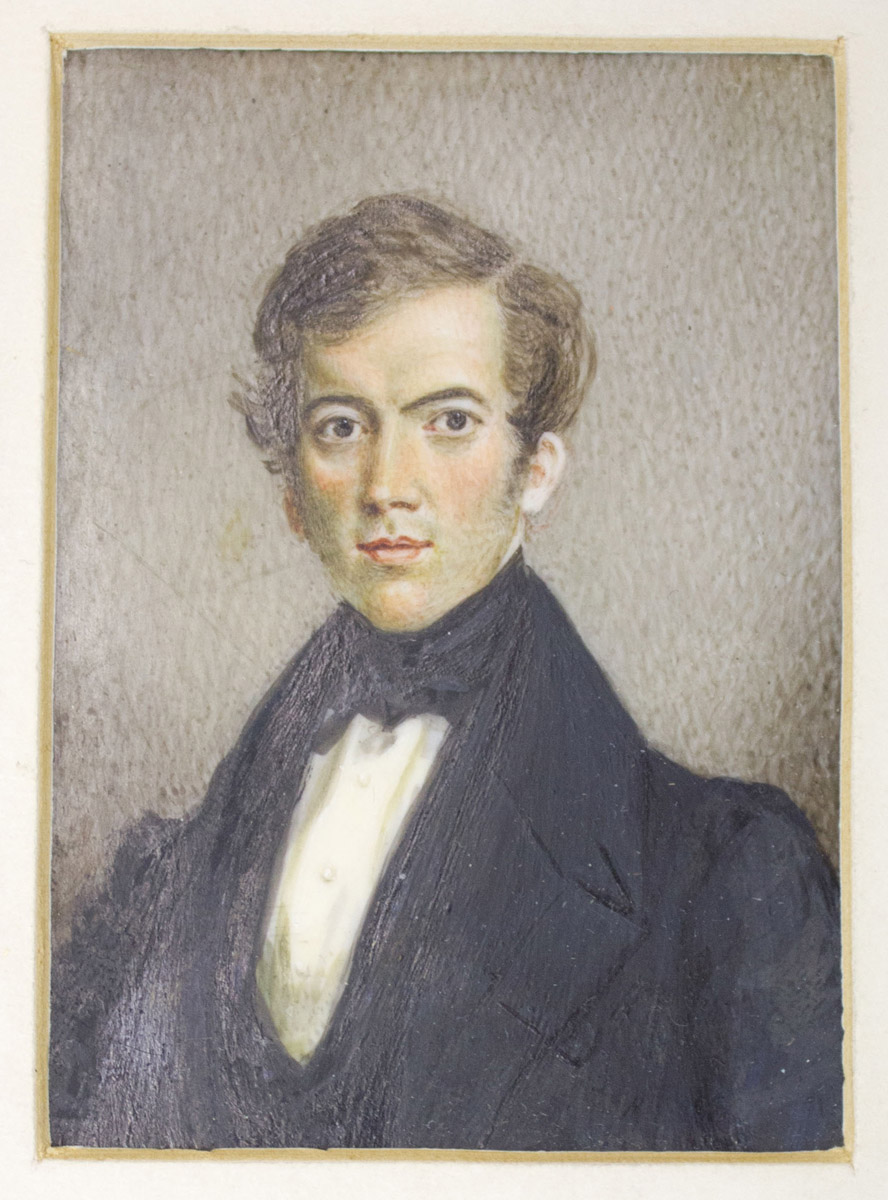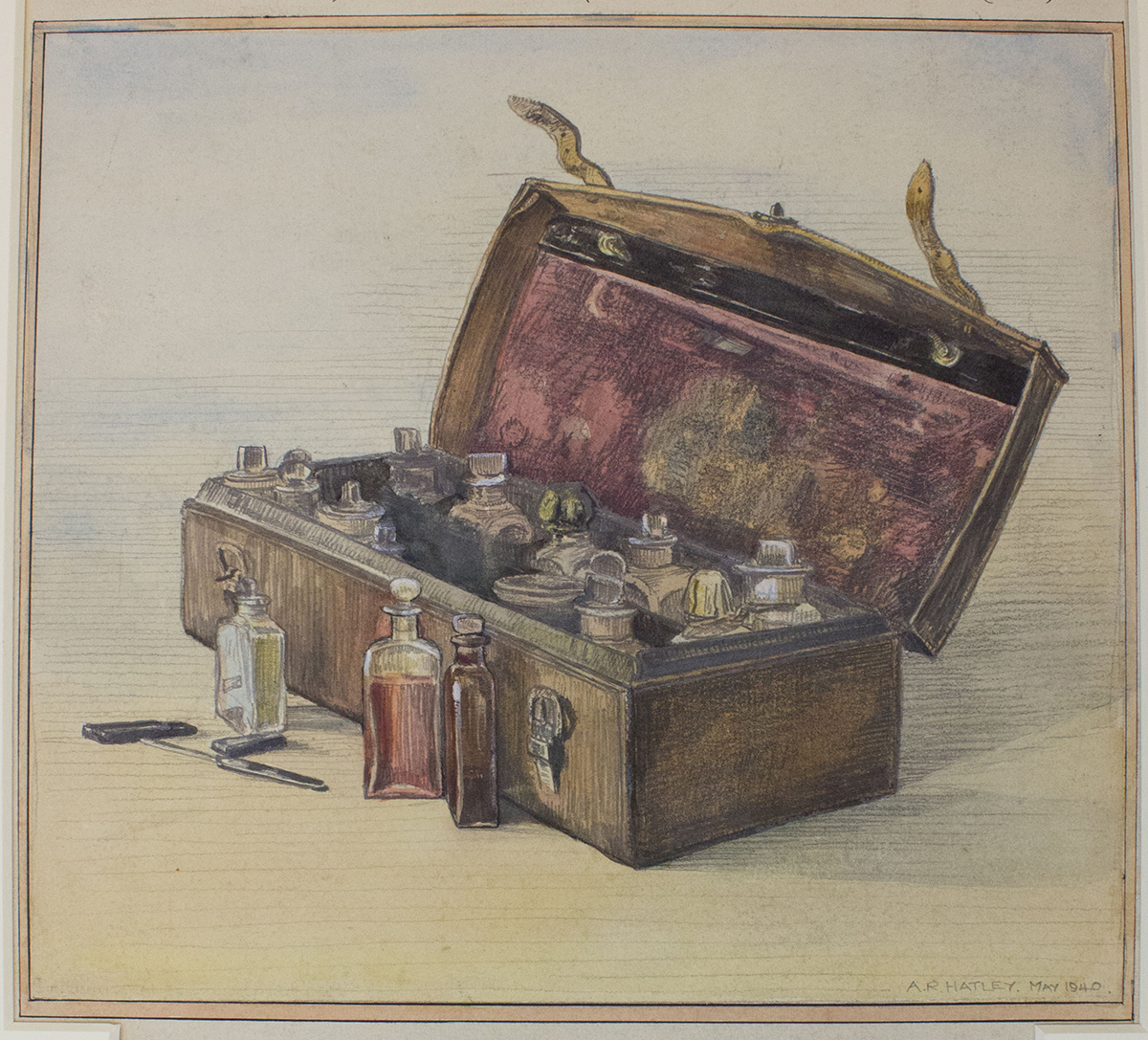Project History
Cite (MLA): Livingstone, Justin D., and Adrian S. Wisnicki. "Project History." In Livingstone's Missionary Travels Manuscript. Justin D. Livingstone and Adrian S. Wisnicki, dirs. Livingstone Online. Adrian S. Wisnicki and Megan Ward, dirs. 2019. Web. http://livingstoneonline.org/uuid/node/ec6d6607-ae4b-4289-9429-f7a225760d1f.
This essay provides a project history for the critical edition of Livingstone’s Missionary Travels Manuscript. It describes the particular contributions of the personnel involved in the project and documents each phase of development over a six-year period.
- Introduction
- Background to the Project (2011-13)
- Initial Grants and Preparatory Work (2013)
- Critical Editing and Encoding: Phase One (2013-15)
- Critical Editing and Encoding: Phase Two (2015-16)
- MHRA Associateship (2016-17)
- Rendering the Manuscript Onscreen (2016-17)
- Critical Materials and Edition Development (2017-19)
- Conclusion
Introduction Top ⤴
The project team developed the critical edition of Livingstone’s Missionary Travels Manuscript over a period of six years, making it Livingstone Online’s longest running project. This essay provides a history of the edition, from its first conception to publication. The narrative below discusses the background to the project, the team’s efforts to secure funding, the phases of collaborative critical editing and encoding, the impact of an MHRA Research Associateship on project development, technical innovation in the context of the edition, the composition of critical materials, and the process of building the edition.
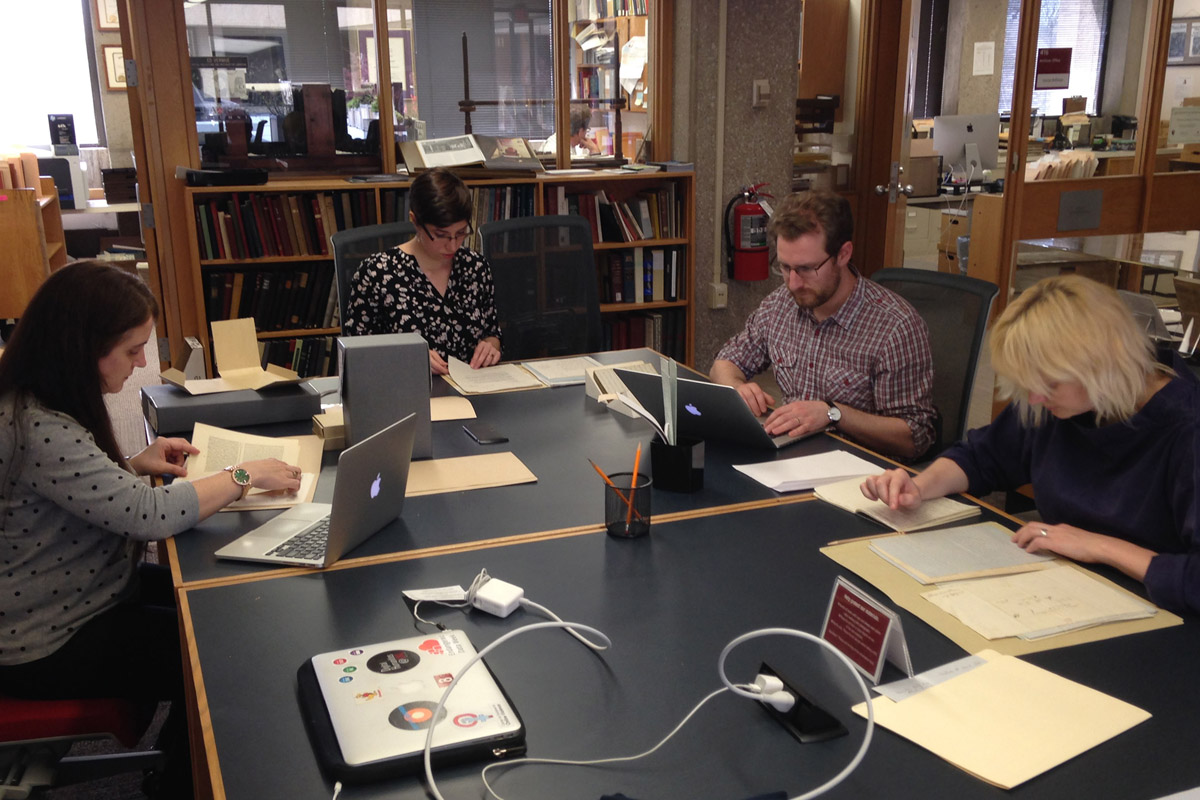
Heather F. Ball, Mary Borgo Ton, Justin D. Livingstone, and Kate Simpson at Oberlin College Archives, 2017. Copyright Adrian S. Wisnicki. Creative Commons Attribution-NonCommercial 3.0 Unported. In addition to project work, members of the Missionary Travels manuscript edition team (Ball, Livingstone, Simpson) also contributed to other Livingstone Online initiatives such as LEAP or the 1870 Field Diary project; worked in collaboration with personnel involved in building other editions, like that of Livingstone's Manuscripts in South Africa (for instance, Ton); or helped shaped the general intellectual climate of Livingstone Online development through regular interactions with site personnel.
The present edition ran in parallel with the Livingstone Online Enrichment and Access Project (LEAP) and the 1870 Field Diary project. These two initiatives developed methodological practices that would support the Missionary Travels manuscript team and led to major modifications to Livingstone Online that facilitated the integration of the edition into the site as a whole. This project history, therefore, also places the development of the Missionary Travels manuscript project within the wider history of these two related initiatives.
Background to the Project (2011-13) Top ⤴
Initial discussions about the present edition began on 31 January 2011, as documented in email from the time. The directors of the edition, Justin D. LivingstoneJustin D. Livingstone (Lecturer, Queen’s University Belfast). Associate Project Scholar for Livingstone Online. Joint Director, Lead Scholar, and Lead Editor of Livingstone’s Missionary Travels Manuscript (1857). and Adrian S. WisnickiAdrian S. Wisnicki (Associate Professor, University of Nebraska-Lincoln). Director of Livingstone Online, LEAP, and the Livingstone Spectral Imaging Project. Joint Director and Lead Project Developer of Livingstone’s Missionary Travels Manuscript (1857)., first met the previous year after a presentation by Adrian at the National Library of Scotland. Following this meeting and subsequent correspondence, Adrian invited Justin to co-author an essay revisiting surviving evidence about the date of the famous Livingstone-Stanley meeting in central Africa in 1871. That essay became a key component of the 1871 Field Diary multispectral edition, itself the major outcome of the first phase of the Livingstone Spectral Imaging Project.
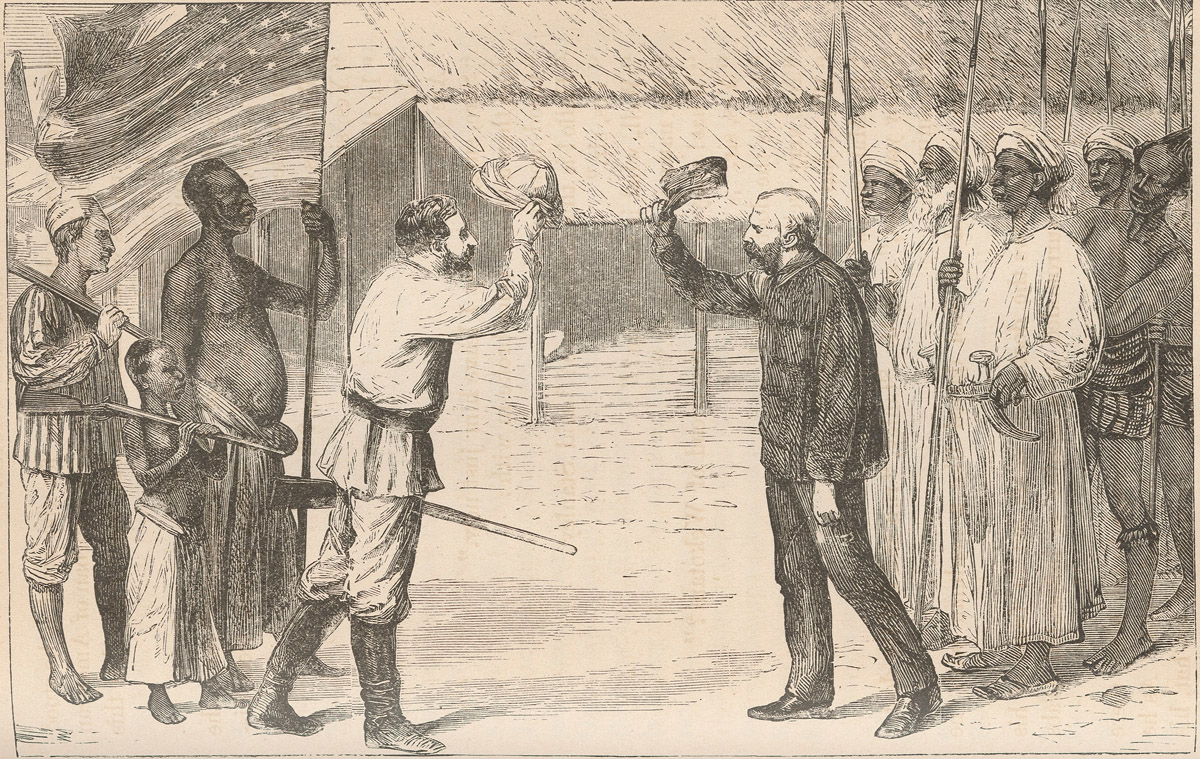
Stanley Meeting Livingstone. Illustration from J. E. Chambliss, The Life and Labors of David Livingstone, LL.D., D.C.L. (Philadelphia, Boston, and Cincinnati: Hubbard Bros., 1875), 695. Copyright National Library of Scotland. Creative Commons Share-alike 2.5 UK: Scotland. Adrian S. Wisnicki and Justin D. Livingstone, the directors of the present edition, first collaborated on an essay regarding the date of this famous meeting in 1871.
The experience of collaboration and an awareness of the achievements of the spectral imaging project inspired Justin’s interest in using digital tools to extend his research on David Livingstone's writings. Further discussion with Adrian during 2011 and 2012 resulted in a proposal to develop a digital edition of the manuscript of Livingstone’s Missionary Travels. Adrian’s position as co-director of Livingstone Online made the proposal viable as did, subsequently, a major grant from the National Endowment for the Humanities (NEH) for the Livingstone Online Enrichment and Access Project (LEAP; 2013-17). This grant – among its objectives – would ultimately give Livingstone Online the infrastructural capacity to incorporate independent editions like that of the Missionary Travels manuscript.
Initial Grants and Preparatory Work (2013) Top ⤴
As the LEAP team launched its preliminary work, JustinJustin D. Livingstone (Lecturer, Queen’s University Belfast). Associate Project Scholar for Livingstone Online. Joint Director, Lead Scholar, and Lead Editor of Livingstone’s Missionary Travels Manuscript (1857). and AdrianAdrian S. Wisnicki (Associate Professor, University of Nebraska-Lincoln). Director of Livingstone Online, LEAP, and the Livingstone Spectral Imaging Project. Joint Director and Lead Project Developer of Livingstone’s Missionary Travels Manuscript (1857). began to develop plans for the Missionary Travels manuscript project. However, it soon became clear that edition development would necessitate outside funding to support the substantial critical editing and encoding needed to prepare the manuscript for online publication.
This realization, however, occurred at a fortuitous moment because 2013 marked the bicentenary of Livingstone’s death. The bicentenary year resulted in commemorations across the United Kingdom and parts of central and east Africa, and also renewed public and academic interest in Livingstone’s life and work. For instance, the National Trust for Scotland established a fund – the David Livingstone 200 initiative – to support activities related to the bicentenary. Justin made two applications to the fund with the second proving successful and resulting in a grant of £2444.
| (Left; top in mobile) Presentation box containing David Livingstone Centenary Coin, 1913. (Right; bottom) Reverse of David Livingstone Centenary Coin, 1913. Copyright David Livingstone Centre. Object images used by permission. May not be reproduced without the express written consent of the National Trust for Scotland, on behalf of the Scottish National Memorial to David Livingstone Trust. Images of the objects from the David Livingstone Centre are copyright Roddy Simpson. Creative Commons Attribution-NonCommercial 3.0 Unported. This 1913 coin commemorates the centenary of David Livingstone’s birth. The David Livingstone 200 initiative, which helped support the 2013 bicentenary commemorations, became the occasion for the project team’s first successful grant application. |
The trustees of David Livingstone 200 also recommended a potential donor to provide additional funding. Correspondence with this donor, who has since chosen to remain anonymous, and a subsequent formal application led to a second grant of £8000, resulting in over £10,000 for initial development of the proposed edition.
With these funds in place, Adrian trained Justin in Livingstone Online’s TEI-based encoding practices during the summer of 2013. Justin then undertook a series of practice transcriptions, while meeting regularly with Adrian via Skype for feedback on work completed. Later, Heather F. BallHeather F. Ball (Student Success Librarian and Assistant Professor, St. John’s University). Coordinating Associate Project Scholar for Livingstone Online. Critical Encoding/Editing Specialist for Livingstone’s Missionary Travels Manuscript (1857)., Coordinating Associate Project Scholar for Livingstone Online, also contributed to the review of these practice transcriptions. This extensive training provided Justin with the technical skills that would be needed to lead and supervise the critical encoding of the Missionary Travels manuscript.
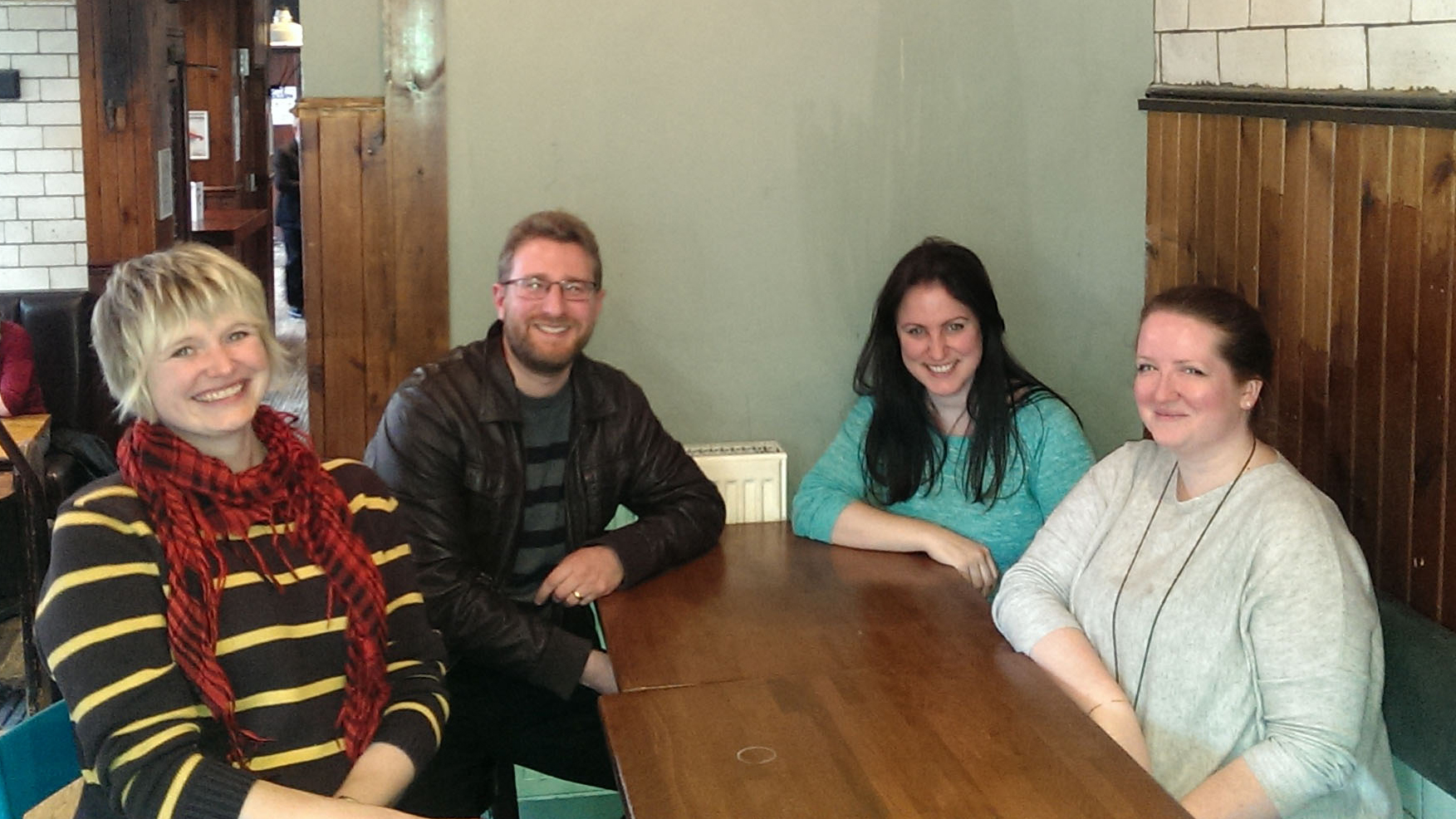
Kate Simpson, Justin D. Livingstone, Heather F. Ball, and Johanna Green in Glasgow, 2015. Copyright Kate Simpson. Creative Commons Attribution-NonCommercial 3.0 Unported. The Missionary Travels manuscript edition brought together scholars of diverse backgrounds, including those deeply steeped in Livingstone Online coding practices (Simpson, Ball), those who developed coding expertise through unrelated initiatives like the Cullen Project (Green), and those with research expertise in nineteenth-century exploration and imperialism (Livingstone). Such variety enabled a robust approach that combined previous experience with new editorial perspectives.
As Justin’s TEI training came to an end in the early fall 2013, he and Adrian began to recruit a team of editorial assistants. Kate SimpsonKate Simpson (Lecturer, Edinburgh Napier University). Associate Project Scholar and UK Outreach Coordinator for Livingstone Online. MHRA Research Associate, Project Scholar, and Critical Encoding/Editing Specialist for Livingstone’s Missionary Travels Manuscript (1857)., who had considerable experience in encoding Livingstone documents as an Associate Project Scholar with Livingstone Online, became the first person to join the team. Justin subsequently recruited two other assistants from his then institution, the University of Glasgow: Johanna GreenJohanna Green (Lecturer, University of Glasgow). Contributor to Livingstone Online. Critical Encoding/Editing Specialist for Livingstone’s Missionary Travels Manuscript (1857)., a Ph.D. graduate who had previously worked on the Cullen Project, a digital archive focused on the consultation letters of the eighteenth-century physician Dr William Cullen; and Peter SlaterPeter Slater (Graduate Student, University of Glasgow). Contributor to Livingstone Online. Critical Encoding/Editing Specialist for Livingstone’s Missionary Travels Manuscript (1857)., who was studying for an M.Litt. in English Literature.
Critical Editing and Encoding: Phase One (2013-15) Top ⤴
Following the work of recruitment, JustinJustin D. Livingstone (Lecturer, Queen’s University Belfast). Associate Project Scholar for Livingstone Online. Joint Director, Lead Scholar, and Lead Editor of Livingstone’s Missionary Travels Manuscript (1857). and AdrianAdrian S. Wisnicki (Associate Professor, University of Nebraska-Lincoln). Director of Livingstone Online, LEAP, and the Livingstone Spectral Imaging Project. Joint Director and Lead Project Developer of Livingstone’s Missionary Travels Manuscript (1857). began the first stage of the project by completing a sample transcription of several manuscript pages to identify potential encoding issues. This exercise, undertaken in late 2013, generated a range of questions that they then referred to James CummingsJames Cummings (Senior Lecturer, Newcastle University). TEI Specialist for Livingstone Online, the Livingstone Spectral Imaging Project, and Livingstone’s Missionary Travels Manuscript (1857)., a TEI encoding expert and a contributing team member of LEAP. James reviewed the sample transcription and provided feedback to ensure that the proposed edition would conform to TEI best practices. James also occasionally assisted with TEI questions during later stages of development.
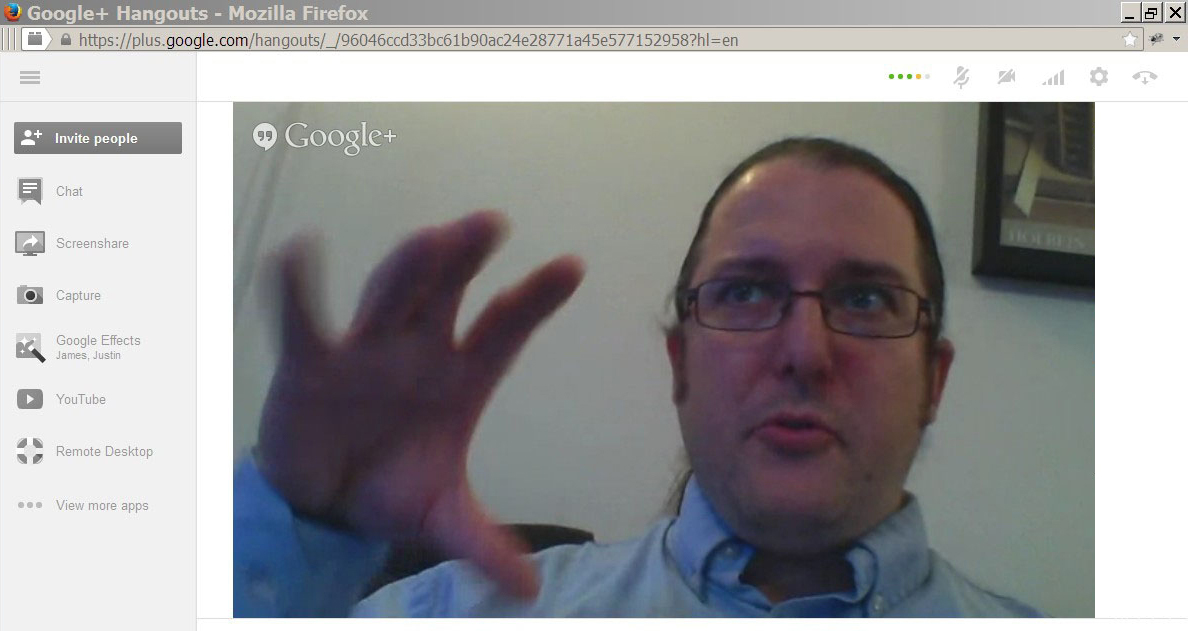
James Cummings during a meeting on Google Hangouts with Adrian S. Wisnicki and Justin D. Livingstone, 2013. Copyright Livingstone Online. Creative Commons Attribution-NonCommercial 3.0 Unported. Cummings played a key role in helping to elaborate the general coding guidelines for Livingstone Online, but also assisted the directors of the Missionary Travels manuscript edition (Livingstone, Wisnicki) in refining project-specific practices. These practices are now documented in a discrete section of the guidelines.
With the sample transcription completed, Justin and Adrian collaborated to design a clear and detailed workflow for the critical editing and encoding phase of the project. This followed practices already established by LEAP and consisted of several stages: a) one member of the project team would transcribe a section of the Missionary Travels manuscript; b) another would proof this transcription; c) Justin would review the transcription and encoding while identifying outstanding TEI queries; and, finally, d) Adrian would review and resolve any such queries. A workflow document shared via Google Drive served to keep track of assigned tasks.
Full-scale transcription, however, did not begin in earnest until 2014. Administrative delays in processing the team's two grants (see previous section) to allow expenditure resulted in a later start than initially anticipated. Nevertheless, from spring 2014 onward the project team made steady progress in transcribing and encoding the first two manuscript volumes of Missionary Travels. Such critical editing continued throughout 2014.
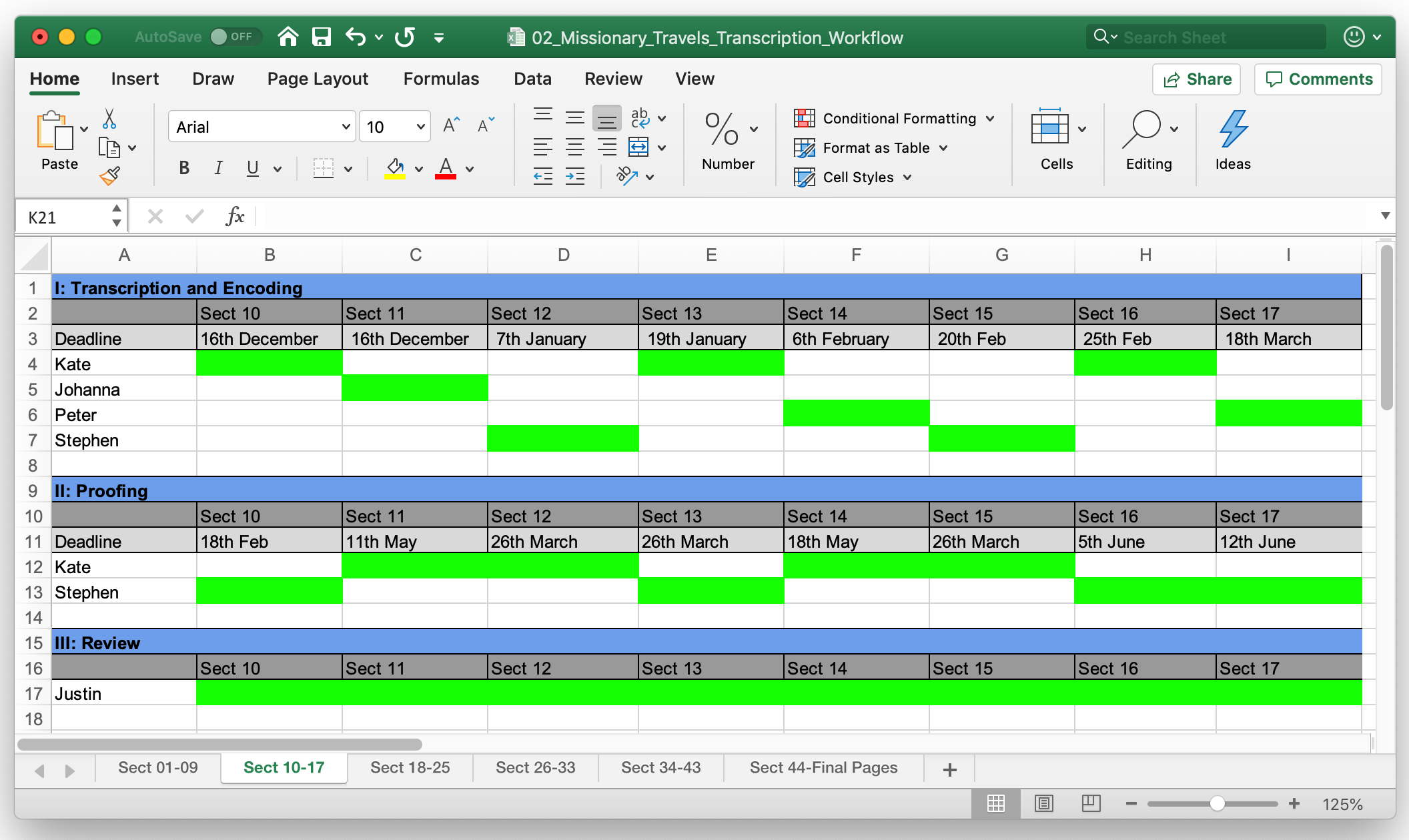
Screenshot of the Missionary Travels transcription workflow document. Copyright Livingstone Online. Creative Commons Attribution-NonCommercial 3.0 Unported. Each of the TEI-based transcriptions included in the present edition went through multiple stages of development, including initial transcription and encoding, sequential phases of proofing and integration, and, finally, the addition of glossary tags. As a result, each transcription includes the collective work of several individuals and reflects a development period of at least two to three years.
In early 2015, both JohannaJohanna Green (Lecturer, University of Glasgow). Contributor to Livingstone Online. Critical Encoding/Editing Specialist for Livingstone’s Missionary Travels Manuscript (1857). and PeterPeter Slater (Graduate Student, University of Glasgow). Contributor to Livingstone Online. Critical Encoding/Editing Specialist for Livingstone’s Missionary Travels Manuscript (1857). stepped back from the encoding team due to other commitments. Fortuitously, shortly before their departure, Stephen HallStephen Hall (Graduate Student, University of Glasgow). Contributor to Livingstone Online. Project Scholar and Critical Encoding/Editing Specialist for Livingstone’s Missionary Travels Manuscript (1857)., a Ph.D. candidate at the University of Glasgow with experience working on the Cullen Project, made enquiries to Justin and Adrian about possible contribution to the Missionary Travels project. Stephen soon received an invitation to join the team as an editorial assistant and quickly helped to fill the gap created by Johanna and Peter’s departures. The transition also enabled the project team to retain the critical encoding momentum.
The encoding practices used in the Missionary Travels manuscript project followed the customised Livingstone Online TEI P5 Encoding Guidelines that James Cummings had created in collaboration with the main LEAP team. The process of critically editing and encoding the Missionary Travels manuscript, however, also contributed to the elaboration of these guidelines by identifying transcription issues that were unique to the manuscript and that would need to be documented in a separate section of the guidelines. Justin and Adrian finished drafting this section in January 2016 (see section 23 of the Guidelines on “Missionary Travels Specific Practices”).
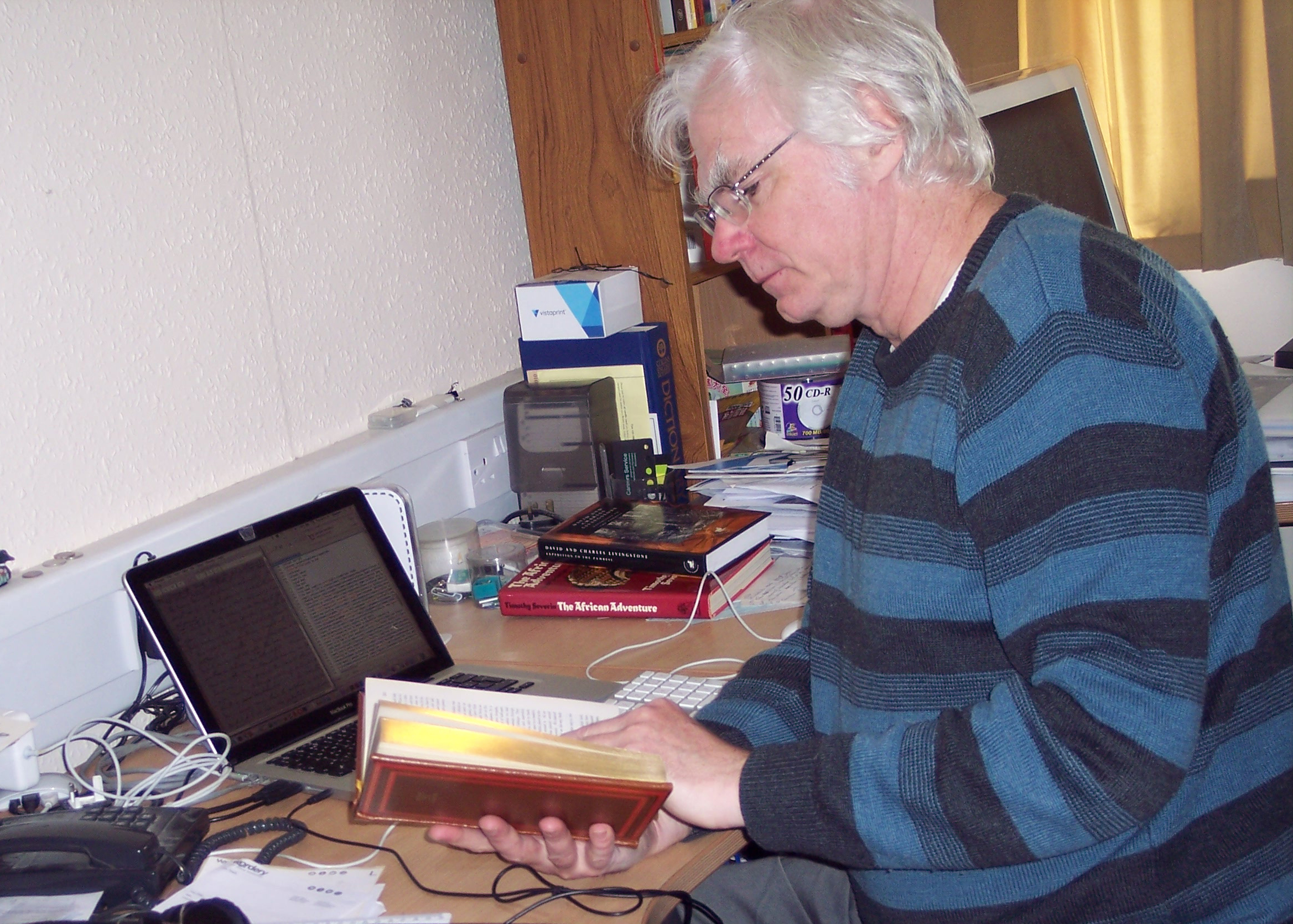
Stephen Hall in his office, Glasgow, 2019. Copyright Stephen Hall. Creative Commons Attribution-NonCommercial 3.0 Unported. Hall joined the project team for the Missionary Travels manuscript edition in 2015 (during the first phase of critical editing and encoding) and came to play a leading role in the second phase of editing and encoding (2015-16).
Thanks to these diverse efforts and initiatives, the project team completed the critical editing and encoding of the first two volumes of the Missionary Travels manuscript by the summer of 2016. In total, this major phase of project development took a little over two years.
Critical Editing and Encoding: Phase Two (2015-16) Top ⤴
During the early years of the first phase of critical encoding, a significant new development occurred in the project. The initial work for LEAP (2013-14) led to the pro bono digitization of the first two volumes of the Missionary Travels manuscript held by the National Library of Scotland (NLS) as well as a handful of additional manuscript fragments found elsewhere. However, in 2014, JustinJustin D. Livingstone (Lecturer, Queen’s University Belfast). Associate Project Scholar for Livingstone Online. Joint Director, Lead Scholar, and Lead Editor of Livingstone’s Missionary Travels Manuscript (1857). and AdrianAdrian S. Wisnicki (Associate Professor, University of Nebraska-Lincoln). Director of Livingstone Online, LEAP, and the Livingstone Spectral Imaging Project. Joint Director and Lead Project Developer of Livingstone’s Missionary Travels Manuscript (1857). launched discussions with David McClayDavid McClay (Philanthropy Manager, Library & University Collections, University of Edinburgh. Former Manuscripts Curator, John Murray Archive, National Library of Scotland). Institutional Contact for Livingstone Online. Honorary Member of Livingstone’s Missionary Travels Manuscript (1857). and Alison MetcalfeAlison Metcalfe (Manuscripts Curator, National Library of Scotland). Institutional Contact for Livingstone Online. Honorary Member of Livingstone’s Missionary Travels Manuscript (1857)., two curators at the NLS, about digitizing the third volume of the Missionary Travels manuscript. In these discussions, it became clear that this third volume – much of which was written in the hand of Charles Livingstone, David Livingstone’s brother – would make an important contribution to the evolving critical edition.
| Painted Magic Lantern Slides: (Left; top in mobile) David Livingstone - Family of Elephants. (Right; bottom) David Livingstone - Crocodile Attack (John Murray c.1857). Copyright National Library of Scotland. Creative Commons Share-alike 2.5 UK: Scotland. The National Library of Scotland not only provided high-resolution images of all three volumes of the Missionary Travels manuscript, but also generously shared a trove of contextual images created as part of the 2013 bicentenary exhibit, "Picturing Africa: Illustrating Livingstone's Travels." The manuscript images became the foundation of the present edition, while the contextual images have supported the project team’s efforts to critically frame Missionary Travels in diverse and complex ways. |
Although the NLS, a long-term supporter of Livingstone Online and key partner on LEAP and the Livingstone Spectral Imaging Projects, could not digitize the third volume pro bono as it had the first two, NLS staff agreed to undertake the work at a considerably reduced rate. Justin secured the finances necessary for the work in September 2014 through a grant of £960 from the Marc Fitch Fund, an educational charity that supports heritage projects and artefact conservation. The NLS then digitized the third manuscript volume in January 2015, and Adrian arranged for the addition of the new images to the Livingstone Online digital collection soon thereafter.
The images of the third manuscript volume of Missionary Travels significantly increased the project’s overall critical editing and encoding workload. The additional material also created the need for further financial support, since the project’s previous grants were fully committed to work involved in encoding only the first two volumes of the manuscript. In fall 2015, Justin took up a new post at Queen’s University Belfast (QUB). Shortly after this move, Justin reviewed potential funders for the next phase of development and submitted an application to an agency focussing on research and education in Scottish history: the Strathmartine Trust. This application was successful, and the project was awarded a grant of £4095 in March 2016.
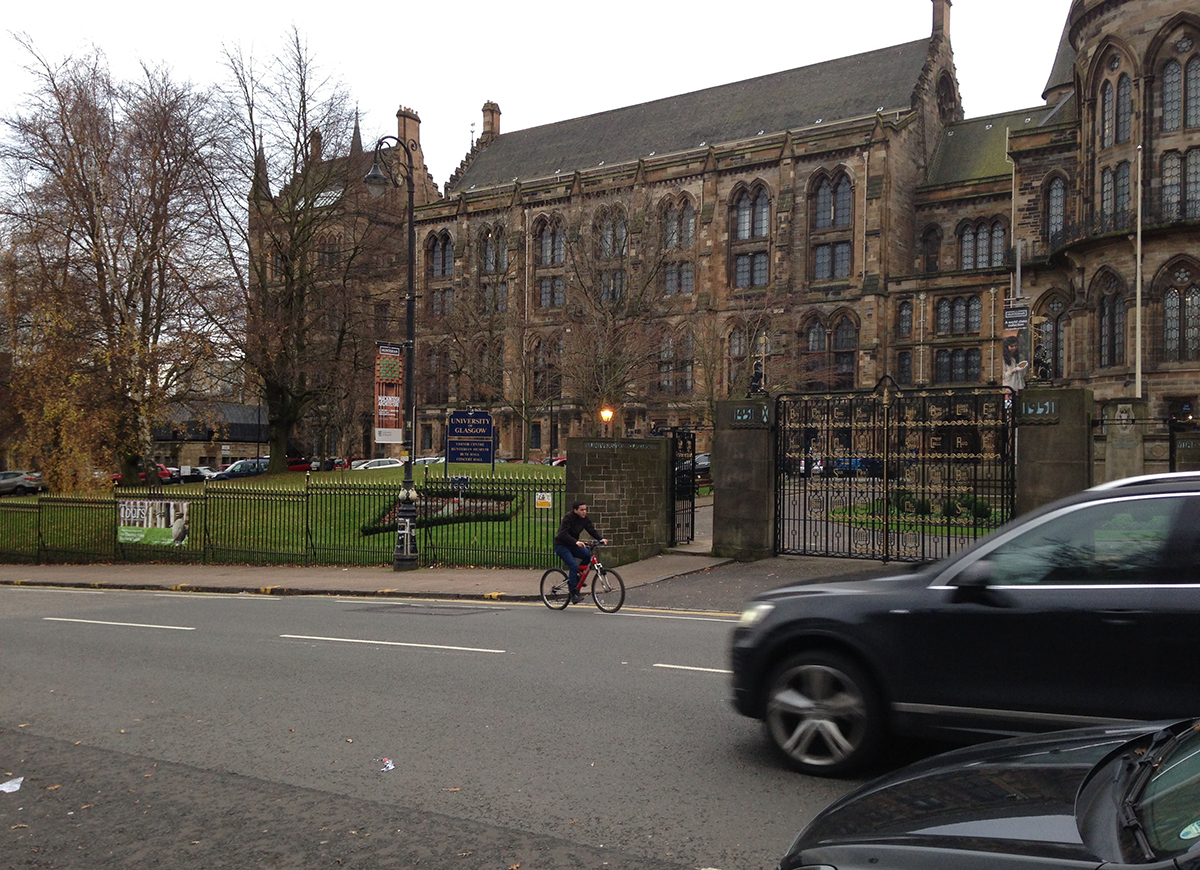
University of Glasgow, 2014. Copyright Livingstone Online. Creative Commons Attribution-NonCommercial 3.0 Unported. Justin D. Livingstone (one of the directors of the present edition) worked at the University of Glasgow during the early years of edition development, while Adrian S. Wisnicki (the other director) helped lead the project from the University of Nebraska-Lincoln while also holding an honorary affiliation with Glasgow. A number of other team members – including Johanna Green, Peter Slater, and Stephen Hall – were also associated with Glasgow.
The project had now received a total of almost £15,500 through a series of small grants over three years, an incremental funding approach that differed considerably from those that were supporting or had supported other Livingstone Online initiatives. In the Livingstone Online context and for scholars pursuing unrelated digital projects, this approach demonstrated how an ambitious critical edition could be undertaken without the award of a major grant.
Shortly after receiving the news of the latest successful funding bid for the edition, Justin and Adrian met with various other members of Livingstone Online in April 2016 for the annual conference of the Nineteenth Century Studies Association (NCSA), which was being held that year at Adrian’s home institution, the University of Nebraska-Lincoln (UNL). The conference included a panel entitled “Papers on Dr. Livingstone, I Presume?” This panel enabled Livingstone Online scholars working on different projects to present and reflect on their work collectively. The gathering also created a chance to review progress on the Missionary Travels manuscript project with other members of the Livingstone Online team and to receive technical training from Jessica DussaultJessica Dussault (Programmer, Center for Digital Research in the Humanities, University of Nebraska-Lincoln)., a programmer in UNL’s Center for Digital Research in the Humanities (CDRH) in using Github, a resource that would become important to subsequent work on the edition.
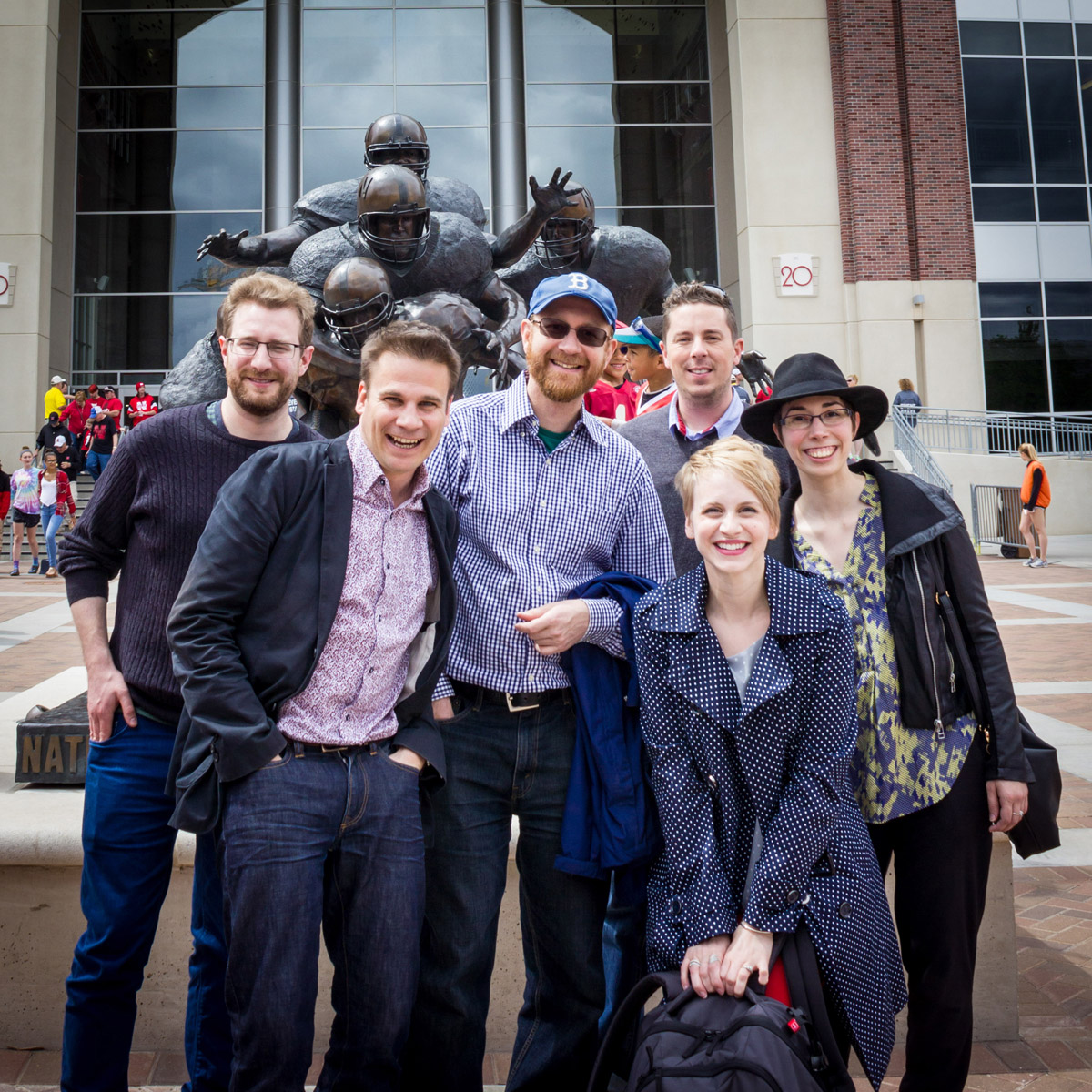
Justin D. Livingstone, James Mussell, Adrian S. Wisnicki, Jared McDonald, Angela Aliff, and Mary Borgo Ton in Lincoln, Nebraska, 2016. Copyright Angela Aliff. Creative Commons Attribution-NonCommercial 3.0 Unported. The development of the Missionary Travels manuscript edition relied on serious work, but also – as in the case of other Livingstone Online initiatives – drew on team building and camaraderie beyond strictly work-related confines. The Nineteenth Century Studies Association (NCSA) conference, the occasion that brought the individuals shown here together, offered an exemplary opportunity to engage these different facets of team interaction. Note: James Mussell (University of Leeds), though not a member of the team and not a staff member of Livingstone Online, is a long-time supporter of the site and was a keynote speaker at the conference.
Following these various developments, the transcription of the third volume of the Missionary Travels manuscript began in June 2016. This time, there were fewer new challenges for the project team and work proceeded at a much quicker rate than previously. Although volume three may be the most complex of the Missionary Travels manuscripts, the team finished the transcription of this volume after only six months of work. This last endeavor, therefore, brought the critical editing and encoding phase to an end in December 2016 and set the stage for the next phases of development.
MHRA Associateship (2016-17) Top ⤴
In early 2016, the project directors learned about the Research Associateship scheme of the Modern Humanities Research Association (MHRA). This scheme supports “research projects of special importance” by funding part-time post-doctoral research assistance for a period of one year. The scheme also seeks to facilitate early-career scholars in search of a permanent academic position by providing an interim post.
The possibility of bringing a Research Associate onto the Missionary Travels manuscript project for a year was an exciting prospect, so JustinJustin D. Livingstone (Lecturer, Queen’s University Belfast). Associate Project Scholar for Livingstone Online. Joint Director, Lead Scholar, and Lead Editor of Livingstone’s Missionary Travels Manuscript (1857). and AdrianAdrian S. Wisnicki (Associate Professor, University of Nebraska-Lincoln). Director of Livingstone Online, LEAP, and the Livingstone Spectral Imaging Project. Joint Director and Lead Project Developer of Livingstone’s Missionary Travels Manuscript (1857). collaborated on an MHRA application in February 2016. This application proposed creating a position at Queen’s University Belfast for the 2016-17 academic year. The application was successful; in April 2016 the Missionary Travels manuscript project received a grant of £23,000. This was the fifth award for the edition and significantly the largest – though still small compared to the grants Livingstone Online had received for LEAP ($275,000) and the 1870 Field Diary project ($158, 605).
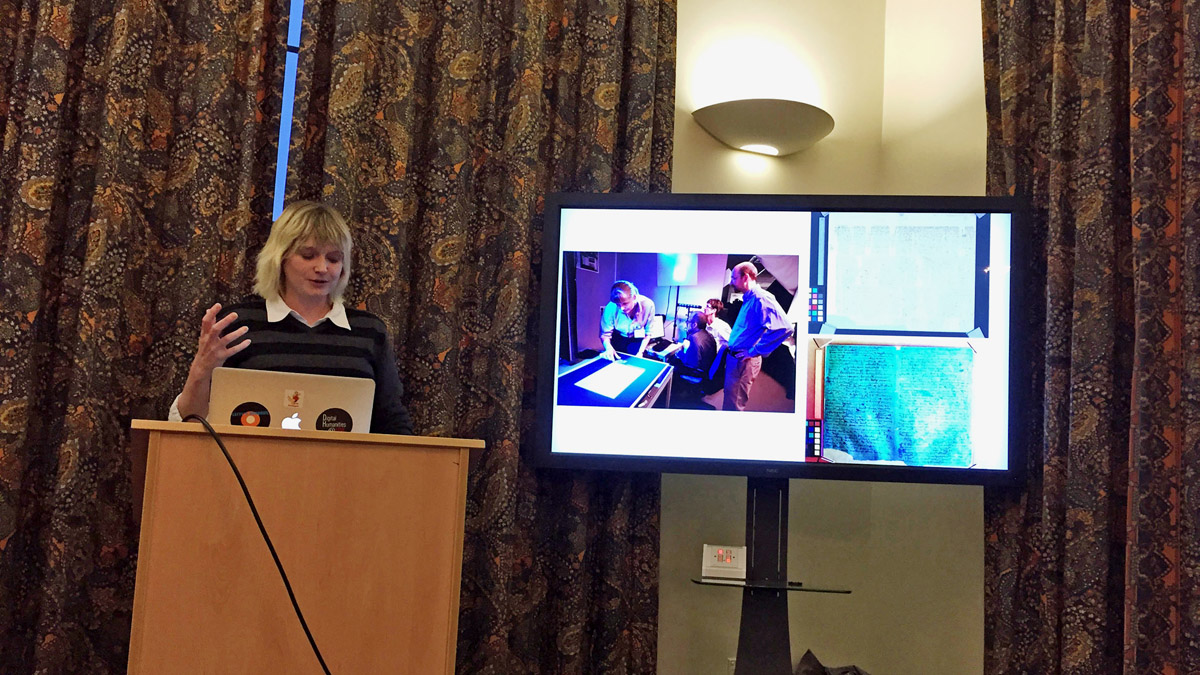
Kate Simpson presenting at Queen's University Belfast, 2016. Copyright Justin D. Livingstone. Creative Commons Attribution-NonCommercial 3.0 Unported. Simpson's initial experience with Livingstone manuscripts came through her work as a research assistant for the multispectral edition of the 1871 Field Diary (2010-11), the focus of the lecture slide shown in this image. An MHRA Associateship (alongside concurrent work on other Livingstone Online initiatives like LEAP and the 1870 Field Diary project) diversified her professional development and placed her in more advanced leadership roles, while also enabling her to build knowledge of manuscripts from the earlier phases of Livingstone's career.
QUB advertised the Research Associateship in July 2016. Following the shortlisting and interview process (a process in which the MHRA participated), Kate SimpsonKate Simpson (Lecturer, Edinburgh Napier University). Associate Project Scholar and UK Outreach Coordinator for Livingstone Online. MHRA Research Associate, Project Scholar, and Critical Encoding/Editing Specialist for Livingstone’s Missionary Travels Manuscript (1857). – who was already working on the project as an editorial assistant and who had recently completed her doctorate on Rider Haggard’s colonial fiction at Edinburgh Napier University – accepted the position. Kate was also working as a project scholar on LEAP, contributing to the 1870 Field Diary project, and had previously been involved in the 1871 Field Diary project. This background put her in an excellent position to support the Missionary Travels manuscript project.
When Kate took up post, she worked with Justin and Adrian to devise a work plan for the Associateship that drew on the planning and management practices used by LEAP and the 1870 Field Diary project. The work plan – which focussed primarily on critical encoding and review, the development of outreach materials, and independent research – was posted on Google Drive so that it would be easily accessible and could be regularly updated and revised throughout the year of the Associateship. Provision of the plan also ensured a steady focus on defined goals during the tenure of the position.
| Example Categories of Work | Example Deliverables |
| Research essays | Complete and submit first independent essay for peer review |
| Encoding and proofing | Encode published version of Missionary Travels in TEI XML |
| Training | Complete Code Academy courses in HTML and CSS |
| Presentations | Prepare and submit abstract to Digital Humanities conference |
| Outreach | Develop educational worksheets for school pupils ages 9-12 |
These examples from Kate Simpson's MHRA Associateship work plan underscore the diverse range of her accomplishments during her year at Queen's University Belfast.
In taking up the Associateship, Kate first worked on preparing a TEI-based transcription of the published version of Missionary Travels. This transcription would later be included in the edition as a parallel text, so that interested users could compare it against the manuscript of Missionary Travels. Kate successfully completed this task with guidance from Adrian, who also developed the XSL and CSS files that would transform the encoded transcription of the published text into HTML for online viewing.
Next, following Justin’s full-scale review and revision of the transcriptions and critical encoding of the Missionary Travels manuscript (2016-17), Kate began collaborating with him in May 2017 to generate and proof a list of the key terms tagged in the TEI transcriptions. This additional level of correction implemented practices established by LEAP, supplemented Justin’s TEI review, and ensured the consistency of encoding across the manuscript’s 1,100 pages.
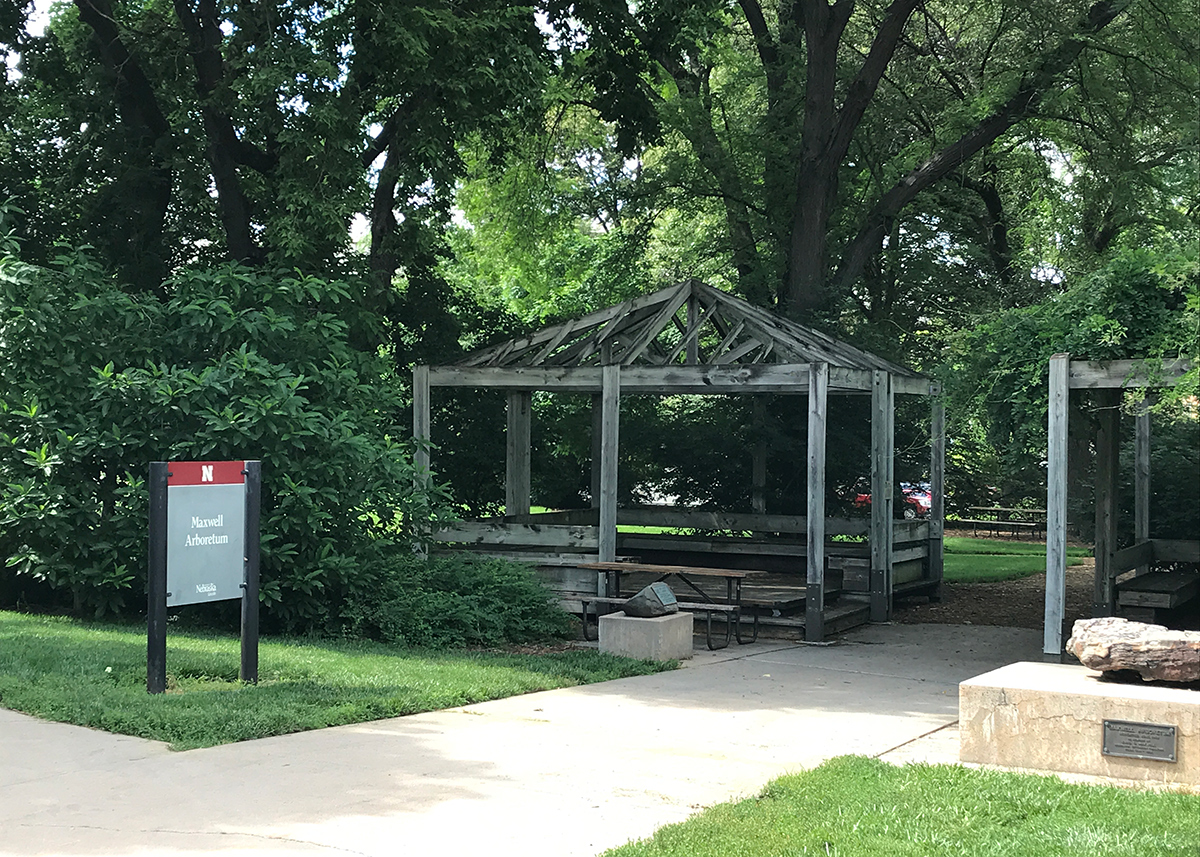
(Top) The Graduate School, Queen's University Belfast, 2016. (Bottom) Entrance to the Maxwell Arboretum, East Campus, University of Nebraska-Lincoln, 2019. Copyright Adrian S. Wisnicki. Creative Commons Attribution-NonCommercial 3.0 Unported. Queen’s University Belfast served as a key center of research (along with, again, the University of Nebraska-Lincoln) during the latter phases of development of the Missionary Travels manuscript edition.
In addition to encoding work, Kate took the lead in developing outreach materials for the Missionary Travels manuscript project. Drawing on her experience as Outreach Coordinator for Livingstone Online and the worksheets she and Livingstone Online Co-Director Megan WardMegan Ward (Assistant Professor, Oregon State University). Co-director of Livingstone Online, LEAP, and the Livingstone Spectral Imaging Project. had created for the site as a whole during LEAP, Kate produced a series of educational worksheets for school children (ages 9-13) that focused on particular aspects of Missionary Travels and enable students to practice textual analysis.
For her independent research project, Kate investigated the “significance of Livingstone Online as a digital library” for facilitating “the rediscovery of lost, silenced, or muted narratives in the historical record.” The resulting essay, “Reading Exploration through the Digital Library,” was independently peer-reviewed and published on Livingstone Online in late 2017. (For more on Kate’s experience as MHRA Research Associate, see her blog post: “Missionary Travels – From Page to Screen.”)
Rendering the Manuscript Onscreen (2016-17) Top ⤴
The MHRA Associateship year (2016-17) was also the period during which the project directors had the most opportunity for face-to-face work on the edition. For instance, in November 2016, AdrianAdrian S. Wisnicki (Associate Professor, University of Nebraska-Lincoln). Director of Livingstone Online, LEAP, and the Livingstone Spectral Imaging Project. Joint Director and Lead Project Developer of Livingstone’s Missionary Travels Manuscript (1857). along with a handful of collaborators from the Livingstone Spectral Imaging Project visited Queen's University Belfast as part of a “UK tour” to mark the release of the beta edition of the 1870 Field Diary. In April 2017, JustinJustin D. Livingstone (Lecturer, Queen’s University Belfast). Associate Project Scholar for Livingstone Online. Joint Director, Lead Scholar, and Lead Editor of Livingstone’s Missionary Travels Manuscript (1857). and KateKate Simpson (Lecturer, Edinburgh Napier University). Associate Project Scholar and UK Outreach Coordinator for Livingstone Online. MHRA Research Associate, Project Scholar, and Critical Encoding/Editing Specialist for Livingstone’s Missionary Travels Manuscript (1857). visited the University of Nebraska-Lincoln where they presented papers on the Missionary Travels manuscript project to the English Department and other members of the UNL academic community. Finally, Adrian visited QUB again in May 2017 and led a workshop on digital research methods to staff and students.
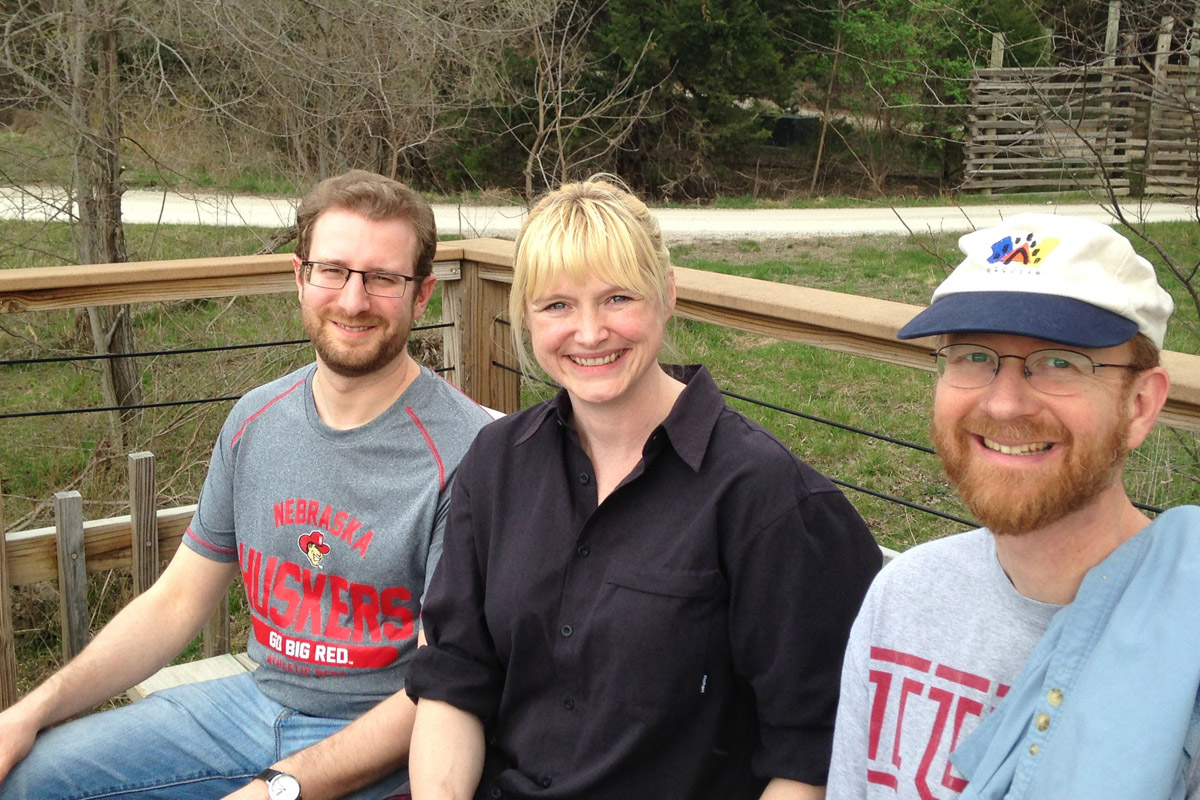
Justin D. Livingstone, Kate Simpson, and Adrian S. Wisnicki while visiting the Lee G. Simmons Conservation Park and Wildlife Safari in Ashland, Nebraska, 2017. Copyright Adrian S. Wisnicki. Creative Commons Attribution-NonCommercial 3.0 Unported. In addition to providing a break from scholarship, the visit to the Simmons Conservation Park and Wildlife Safari also sparked discussions regarding the value – especially in the aggregate – of historical data on flora, fauna, and environment in explorer accounts for measuring present-day issues like deforestation, species extinction, and climate change.
Collectively, these visits allowed for knowledge exchange at the project directors’ respective institutions. They also facilitated intense periods of development on the onscreen rendering of the Missionary Travels transcriptions. Distinctive features of the manuscript (such as marginal annotations; proof-correction marks; multiple hands; deletions and overwriting in different colours) required modes of digital representation new to Livingstone Online. Adrian took the lead on this, which meant significant redevelopment and expansion of the XSL and CSS files used for other manuscripts published through the main site.
The initial XSL and CSS files for Livingstone Online had been created in 2015 by James CummingsJames Cummings (Senior Lecturer, Newcastle University). TEI Specialist for Livingstone Online, the Livingstone Spectral Imaging Project, and Livingstone’s Missionary Travels Manuscript (1857).. By starting with these files and by drawing on the experience of a one-day training session that James had provided in 2012 as well as some Code Academy courses in HTML and CSS, Adrian soon began to acquire the skills needed for the task of redeveloping the XSL and CSS files for the present edition. Indeed, Adrian’s prior training plus persistence and additional research enabled him to address a series of increasingly difficult onscreen representation issues. During this period, Justin also completed several Code Academy courses while receiving additional training from Adrian in order to contribute to the XSL and CSS development.

Screenshot of a GitHub ticket addressing the onscreen rendering of marginal correction marks in the Missionary Travels manuscript. Copyright Livingstone Online. Creative Commons Attribution-NonCommercial 3.0 Unported. The team turned to GitHub when tackling more complex onscreen rendering issues, but in the case of simpler problems often relied on email or even quick discussion during Skype meetings. A set of curated project documents can be downloaded from a link at the end of this project history, but this edition – like others published by Livingstone Online – also spurred team reflections on the limits of documentation, especially in terms of conveying ephemeral (but often key) moments of development such as in-person conversations.
When working at a distance, Justin and Adrian made extensive use of Github for their shared work. The work followed an iterative format that included: a) initial identification and ticketing of rendering needs by Justin, b) XSL and CSS development by Adrian, c) HTML testing and review by Justin, and, finally, d) further problem solving and XSL and CSS development by Adrian. All together, this process required several intense and extended sessions of work over twelve months. The culmination of this period was the successful, highly granular, onscreen representation of the full 1,100 page Missionary Travels manuscript and the public release of the critically edited and encoded transcriptions in November 2017.
Critical Materials and Edition Development (2017-19) Top ⤴
The critical materials for the edition were developed between early 2017 and early 2019. These encompass an extensive glossary of key terms referenced in the Missionary Travels manuscript as well as a range of critical and historical essays.
JustinJustin D. Livingstone (Lecturer, Queen’s University Belfast). Associate Project Scholar for Livingstone Online. Joint Director, Lead Scholar, and Lead Editor of Livingstone’s Missionary Travels Manuscript (1857). began work on the glossary at the beginning of 2017 and continued this at intervals until the closing stages of the project. As with the glossary of the key terms in Livingstone’s 1870-71 manuscripts, the aim was to identify and describe individuals, ethnic groups, organisations, settlements, regions, and geographical features. Ultimately, Justin included notes on over 750 people, groups, and places in the completed Missionary Travels glossary.

XML glossary file containing descriptions of individuals tagged in the project team's transcriptions of the Missionary Travels manuscript. Copyright Livingstone Online. Creative Commons Attribution-NonCommercial 3.0 Unported. The specific examples presented in this screenshot offer a good instance of how the Missionary Travels manuscript edition team used research and critical remediation to recover and foreground the histories of individuals that are often sidelined in popular and academic accounts of nineteenth-century travel and intercultural encounter that focus on the biographies of British explorers.
Research towards the glossary also provided background to the critical essays by lending insight into the intellectual, political, and cultural contexts of Livingstone’s early period in southern Africa as well as those of mid-Victorian Britain. The scope of the materials expanded as the overall project evolved in response to the findings produced by editorial work on the manuscript and through conversations between the project directors and other team members. Between summer 2017 and December 2018 Justin wrote five major critical essays, with AdrianAdrian S. Wisnicki (Associate Professor, University of Nebraska-Lincoln). Director of Livingstone Online, LEAP, and the Livingstone Spectral Imaging Project. Joint Director and Lead Project Developer of Livingstone’s Missionary Travels Manuscript (1857). and Jared McDonaldJared McDonald (Senior Lecturer, University of the Free State). Associate Project Scholar and Lead contact for South African Research for Livingstone Online. Joint director of Livingstone's Manuscripts in South Africa (1843-72). Associate Project Scholar for Livingstone’s Missionary Travels Manuscript (1857). (Livingstone Online’s Associate Project Scholar and Lead Contact for South African Research) acting as peer-reviewing editors. Each of the essays went through a rigorous and comprehensive process of iterative review, feedback, and revision.
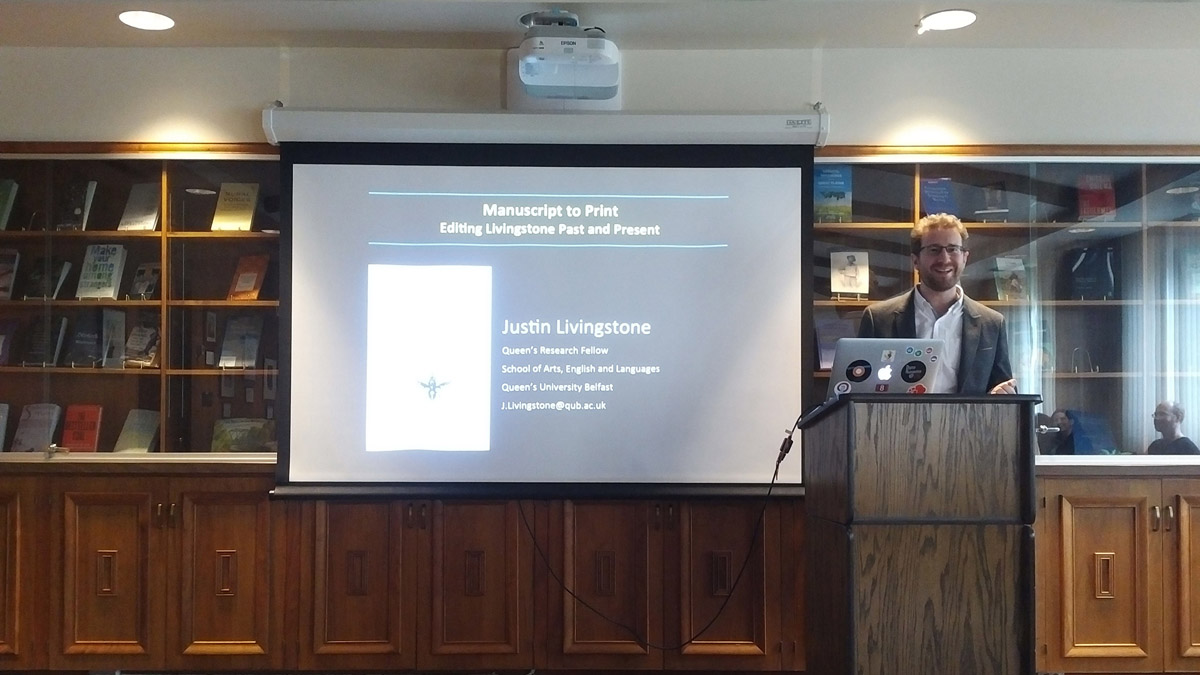
Justin D. Livingstone lecturing on the Missionary Travels manuscript project at the University of Nebraska-Lincoln, 2017. Copyright Kate Simpson. Creative Commons Attribution-NonCommercial 3.0 Unported. Visits by Justin D. Livingstone and Kate Simpson (both at Queen's University Belfast) and Adrian S. Wisnicki (University of Nebraska-Lincoln) to one another's institutions allowed for periods of sustained and focused project development, but also helped facilitate knowledge exchange across institutions. Note: Wisnicki was in the audience for Livingstone's lecture and is reflected in the glass at right.
As development of the essays came to an end, project focus shifted to building the edition. This work was made possible by prior modifications made to Livingstone Online’s website by Nigel BanksNigel Banks (Independent Programmer). Lead Developer and System Administrator of Livingstone Online. Site Developer for Livingstone’s Missionary Travels Manuscript (1857). (Programmer and System Administrator for Livingstone Online) and Adrian during the work for LEAP and the 1870 Field Diary project. The modifications enable the materials of any given edition to be associated behind the scenes, then presented as an integrated entity through an edition interface navigated by dropdown menu. Nigel and Adrian’s work also resulted in the creation of a multi-text viewer that allows comparative study of two or more encoded texts.
In late 2018, Adrian led the process of building the Missionary Travels edition and embedding the edition materials in the Livingstone Online website. At this stage, Adrian and Justin also collaborated on curating a range of manuscripts and print objects relevant to Missionary Travels for inclusion in the edition in an “Associated Images and Texts” section (accessible from the edition dropdown on this page). Following the completion of this task and the preparation of introductory materials, the project team published the alpha version of the Missionary Travels manuscript edition in January 2019.
| (Left; top in mobile) Miniature portrait of David Livingstone, c.1840. (Right; bottom) Watercolour painting of Dr Livingstone's medical chest. Used by him on his Last Journey, c.1940. Images of items from SOAS Library, University of London by Angela Aliff. Images copyright Council for World Mission. Used by permission for private study, educational or research purposes only. Please contact SOAS Archives & Special Collections on [email protected] for permission to use this material for any other purpose. These illustrations represent some of Livingstone’s important nineteenth-century contexts. The little-known portrayal of Livingstone as a young man, which is part of a series of miniature portraits of London Missionary Society agents commissioned by the organisation, locates Livingstone’s initial travel to southern Africa in the context of the mid-Victorian evangelical movement. The painting of the medical chest, in turn, signals Livingstone’s professional training and subsequent work as a physician amongst the BaTswana in the 1840s. This work made Livingstone one of Britain’s earliest medical missionaries. As Livingstone’s writings indicate, he also took considerable interest in observing and recording the local medical practices of the African communities he visited. |
The alpha version of the edition did not yet include the glossary, project history (i.e., the present narrative), or illustrations, so development continued over the next few months to bring the project to completion. Justin finished the glossary and published it on the site in April 2019. As with the encoded transcriptions of the 1870 and 1871 Field Diaries, ID tags were also added to the TEI files for the Missionary Travels manuscript so that the glossary notes could appear as tooltips in the context of the online rendering of the transcriptions. This work was undertaken by KateKate Simpson (Lecturer, Edinburgh Napier University). Associate Project Scholar and UK Outreach Coordinator for Livingstone Online. MHRA Research Associate, Project Scholar, and Critical Encoding/Editing Specialist for Livingstone’s Missionary Travels Manuscript (1857)., who integrated these tags in several stages.
| 1) Determine number of illustrations to be used in each edition page. |
| 2) Develop logic to govern image selection. |
| 3) Select images to use from the Livingstone Online archive, the Internet Archive, and elsewhere. |
| 4) Test and refine image arrangement per page via mockups (i.e., images wireframes without intervening critical text). |
| 5) Crop and resize images as needed. |
| 6) Build and test HTML code for displaying images on site, including basic attribution captions and alt and title text. |
| 7) Draft and review critical text to remediate each image. |
| 8) Add code, images, and critical text to site. |
Workflow for preparing images to illustrate the Missionary Travels manuscript edition.
Concurrently, Adrian and Justin collaborated in early 2019 to collate the project documentation, which consists of an array of files that provide insight into the various stages of development. Finally, Justin worked with Adrian to draft the project history and to complement the critical materials by remediating the illustrations. The latter task lasted nearly three months and involved a number of sequential tasks (see above).
This process led to one last reflective review of all the edition’s critical pages and resulted, finally, in the release of the formal first edition of the Missionary Travels manuscript edition in late August 2019. All together, the development of the edition lasted over six years – from 2013 to 2019 (following preliminary discussions in 2011-12) – thereby making the edition the longest-running project in the fifteen-year history of Livingstone Online.
Shortly after completion, the project team submitted the edition to the Modern Language Association (MLA) for peer review and to be considered for a seal from the Committee on Scholarly Editions. Brian Murray (King’s College London) kindly agreed to serve as the edition vetter on behalf of the MLA, while Amy Earhart (Texas A&M University) took the role of review manager; Laura Kiernan (MLA) facilitated the inspection as the Committee’s staff liaison.
Murray delivered a comprehensive and generous report in April 2020 in which he commended the edition to the MLA:
“Livingstone's Missionary Travels Manuscript (1857) is an exemplar of professional, accessible and methodologically transparent textual editing and digital scholarship. […] The textual apparatus and accompanying essays explicitly present the edition as a case study investigating the collaborative labour of transforming expeditionary field notes into a published bestseller. This edition is the best practical illustration I’ve seen of the complex and contingent process through which ‘books’ were made in the nineteenth century.”
Murray’s report also made some recommendations for minor amendments, which the project team implemented. Justin and Adrian then prepared a formal response to the report, which was approved by Murray and forwarded to the MLA Committee on Scholarly Editions for review. On 30 June 2020, the directors received news that the edition had been awarded the seal designating the edition as an MLA Approved Edition. The seal now appears on the home page of the edition.
Conclusion Top ⤴
Work on the Missionary Travels manuscript project presented a number of challenges and took longer than initially anticipated. One challenge was the scale of the manuscript and the complexity of its editorial markup. Transcribing, editing, and encoding this document in TEI, integrating coding changes, and ensuring consistency across 1,100 pages proved to be a much more time intensive task than expected. Ensuring that the transcriptions transformed into HTML correctly and consistently for onscreen viewing also proved quite difficult. The latter work necessitated considerable effort as AdrianAdrian S. Wisnicki (Associate Professor, University of Nebraska-Lincoln). Director of Livingstone Online, LEAP, and the Livingstone Spectral Imaging Project. Joint Director and Lead Project Developer of Livingstone’s Missionary Travels Manuscript (1857). developed his skills in working with XSL and CSS files and as JustinJustin D. Livingstone (Lecturer, Queen’s University Belfast). Associate Project Scholar for Livingstone Online. Joint Director, Lead Scholar, and Lead Editor of Livingstone’s Missionary Travels Manuscript (1857). gained the fluency in markup and transformation needed to explore the ways in which distinctive manuscript features could be rendered on screen.
For Justin, the project also marked a first entry into the digital humanities. This not only meant developing new computing skills, but also learning to work collaboratively while effectively managing a project with multiple personnel who all had other commitments beyond the project. In retrospect, it did become clear that dividing project tasks into more clearly defined phases of work and timetabling these phases more carefully would have enabled the project to run more efficiently in its earliest stages.
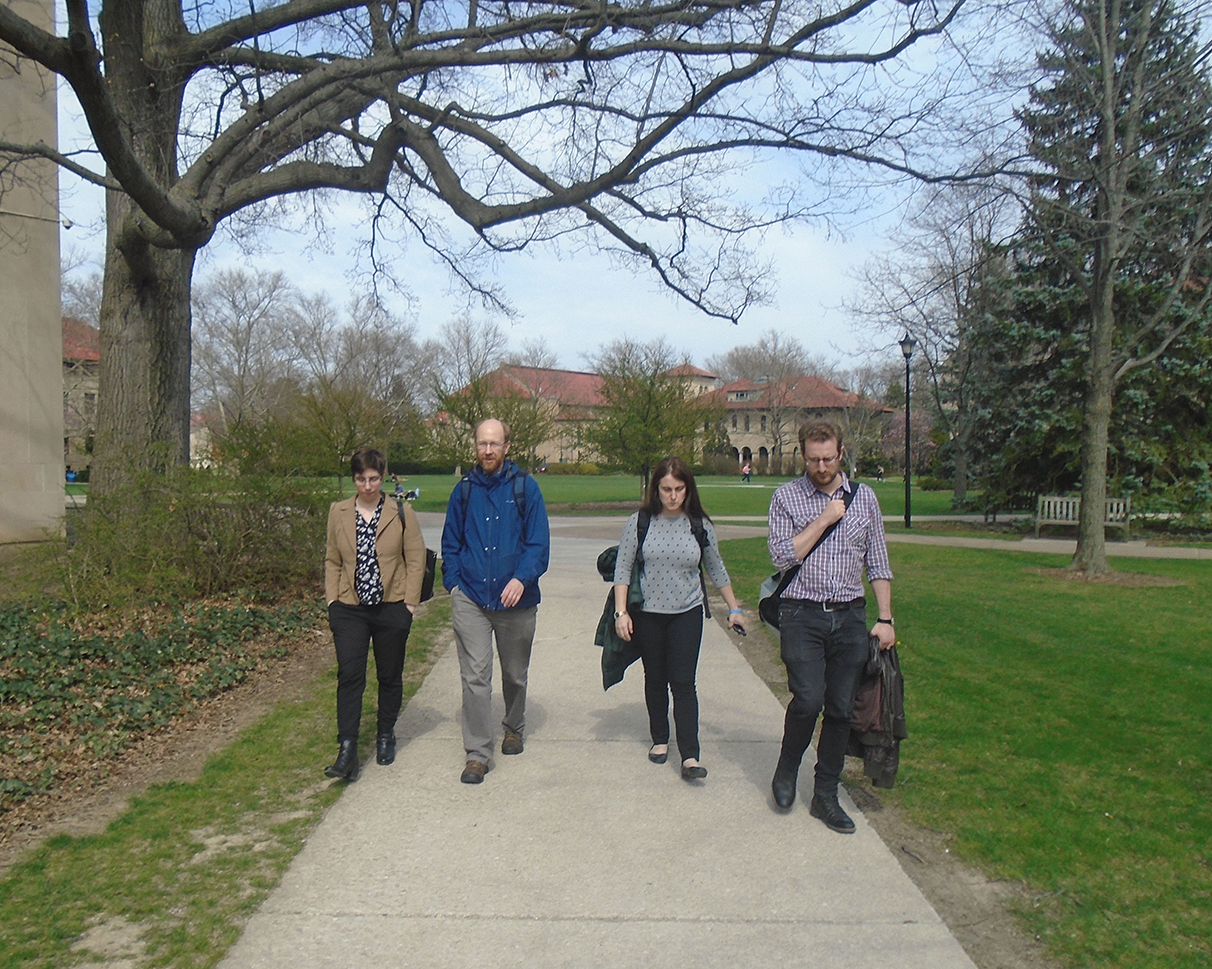
Mary Borgo Ton, Adrian S. Wisnicki, Heather F. Ball, and Justin D. Livingstone walking on the grounds of Oberlin College, 2017. Copyright Kate Simpson. Creative Commons Attribution-NonCommercial 3.0 Unported. This photograph serves as a companion piece to the opening picture in this project history. Both were taken during the same trip and reinforce the point that the Missionary Travels manuscript edition evolved in the broader context of other Livingstone Online initiatives. Together, the images show key members of the Missionary Travels team, while also highlighting their interactions and discussions with other Livingstone Online personnel.
However, although the project was more demanding than expected, it also delivered more than anticipated. The range of critical materials and associated archival documents ultimately resulted in a larger scale edition than was originally envisaged, thereby considerably extending the scope of the critical intervention. The scale at and detail in which the onscreen display captures the textual and material features of Livingstone’s manuscript, moreover, exceeded the project team’s initial expectations and represents a major critical accomplishment in its own right.
The infrastructural support of Livingstone Online also made it possible to fulfil the ambitions of the present edition at a level of complexity that would not have been achievable otherwise. Work on the project proceeded with relatively modest levels of direct investment; it was funded by a series of small grants over a multi-year period. But the project team was able to accomplish a lot with these funds by leveraging Livingstone Online site developments made possible by other NEH-funded initiatives: LEAP and the 1870 Field Diary project. As a result, the present edition ultimately highlights the possibilities for successfully undertaking substantial work in the digital humanities on limited funding while building on a robust partnership with a well-established, large-scale project.
Bonus: Download a set of curated project documents.
Double-bonus: Listen to Kate SimpsonKate Simpson (Lecturer, Edinburgh Napier University). Associate Project Scholar and UK Outreach Coordinator for Livingstone Online. MHRA Research Associate, Project Scholar, and Critical Encoding/Editing Specialist for Livingstone’s Missionary Travels Manuscript (1857). interview Justin D. LivingstoneJustin D. Livingstone (Lecturer, Queen’s University Belfast). Associate Project Scholar for Livingstone Online. Joint Director, Lead Scholar, and Lead Editor of Livingstone’s Missionary Travels Manuscript (1857). about the Missionary Travels manuscript project.


![John Murray III and Anon., David Livingstone - Boat Scene (Painted Magic Lantern Slide), [1857], detail. Copyright National Library of Scotland, CC BY-NC-SA 2.5 SCOTLAND. John Murray III and Anon., David Livingstone - Boat Scene (Painted Magic Lantern Slide), [1857], detail. Copyright National Library of Scotland, CC BY-NC-SA 2.5 SCOTLAND.](https://livingstoneonline.org:443/sites/default/files/section_page/carousel_images/liv_014067_0001-carousel.jpg)
![Image of two pages from Livingstone's Field Diary XVI (Livingstone 1872h:[2]-[3]). CC BY-NC 3.0 Image of two pages from Livingstone's Field Diary XVI (Livingstone 1872h:[2]-[3]). CC BY-NC 3.0](https://livingstoneonline.org:443/sites/default/files/section_page/carousel_images/liv_000016_0003-carousel.jpg)





![David Livingstone, Map of Lakes Nyassa and Shirwa [1864?], detail. Copyright National Library of Scotland, CC BY-NC-SA 2.5 SCOTLAND; Dr. Neil Imray Livingstone Wilson, CC BY-NC 3.0 David Livingstone, Map of Lakes Nyassa and Shirwa [1864?], detail. Copyright National Library of Scotland, CC BY-NC-SA 2.5 SCOTLAND; Dr. Neil Imray Livingstone Wilson, CC BY-NC 3.0](https://livingstoneonline.org:443/sites/default/files/section_page/carousel_images/liv_000077_0001-tile.jpg)

